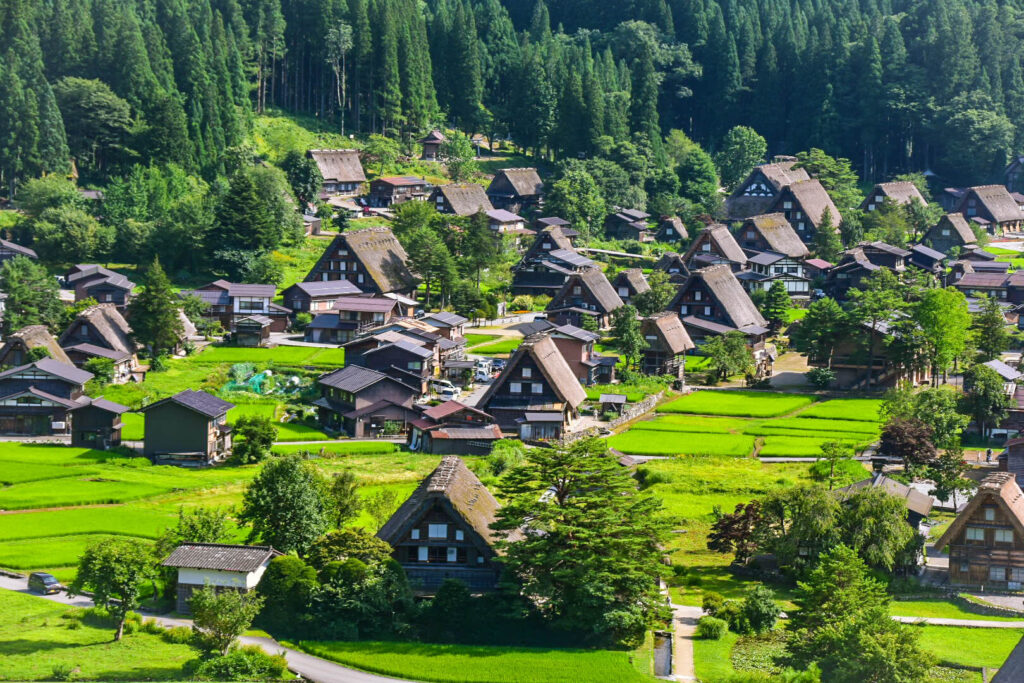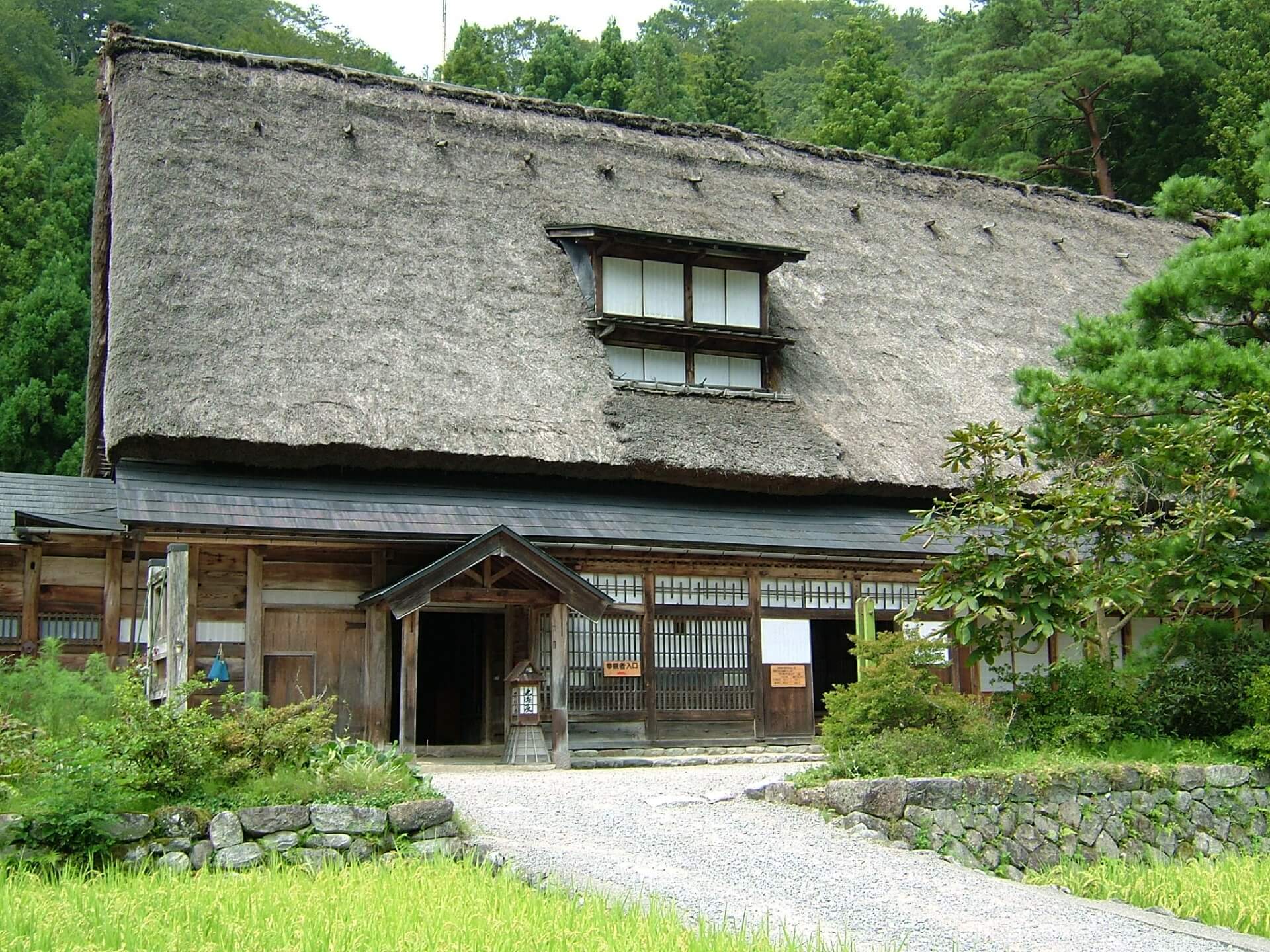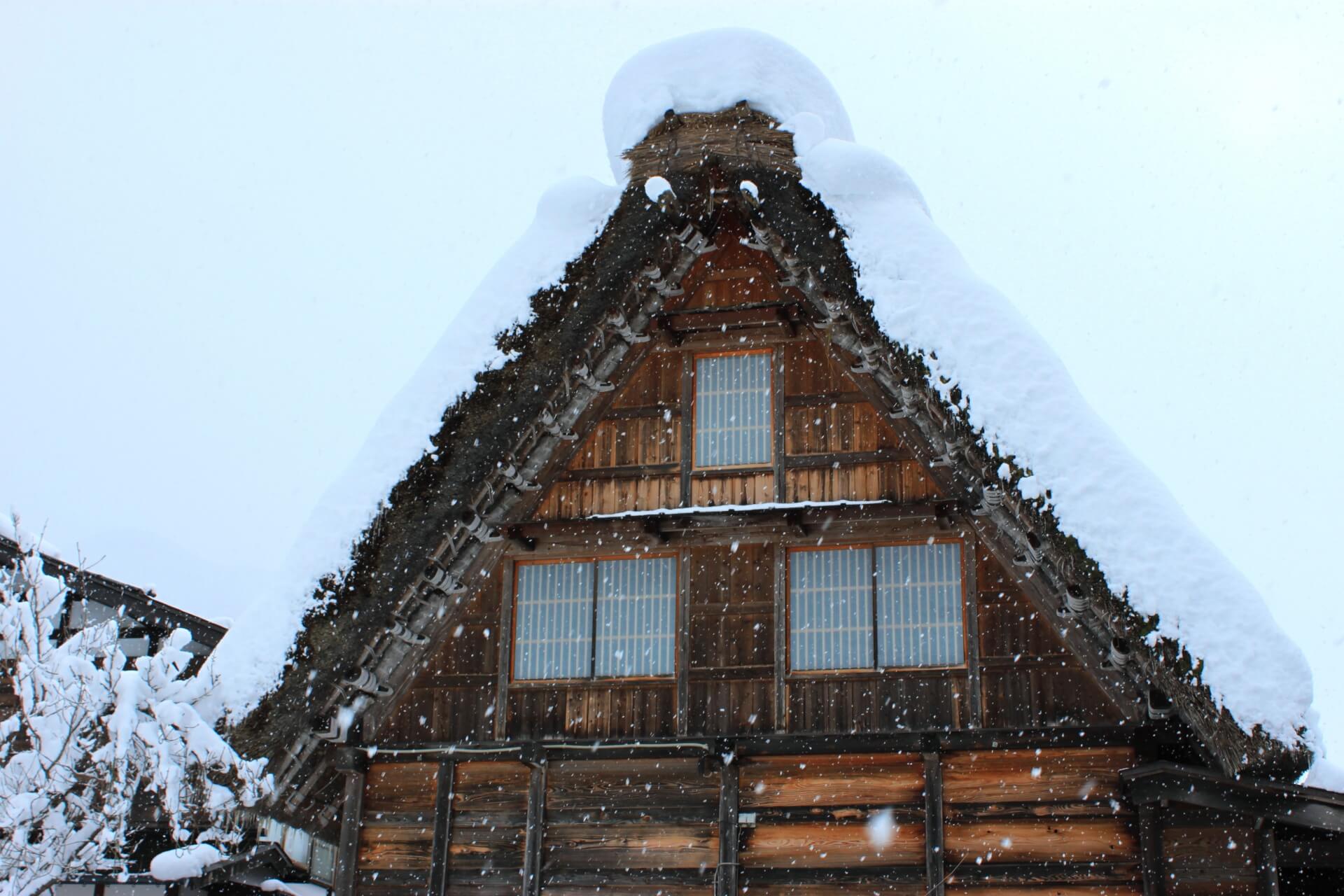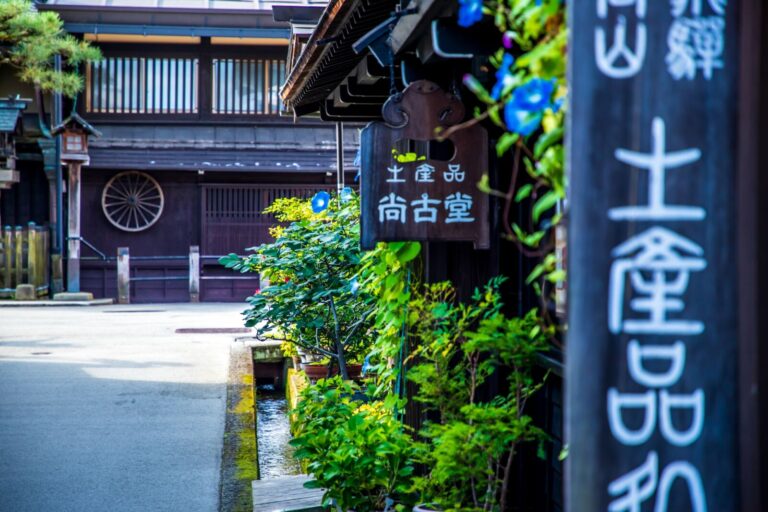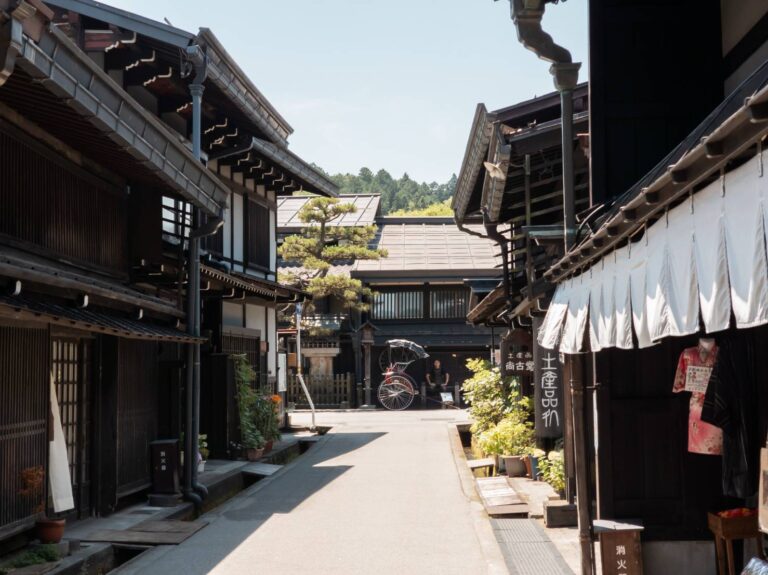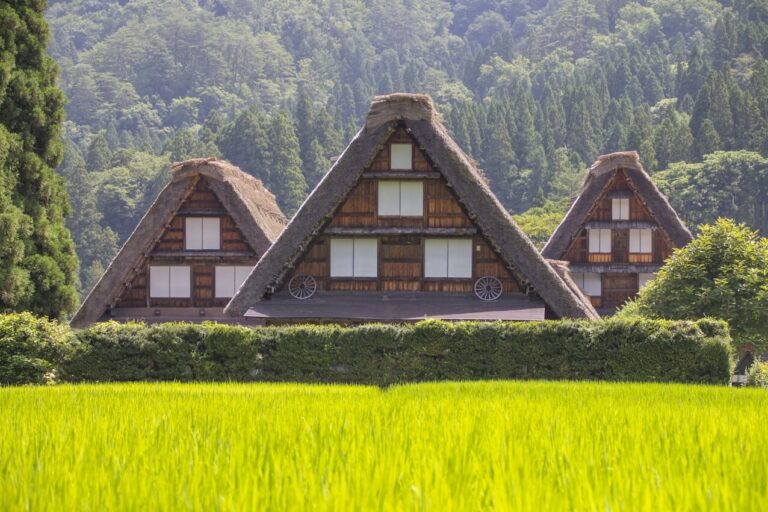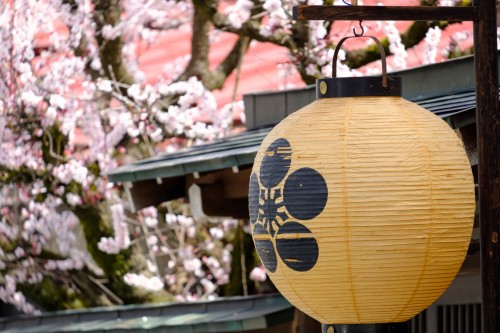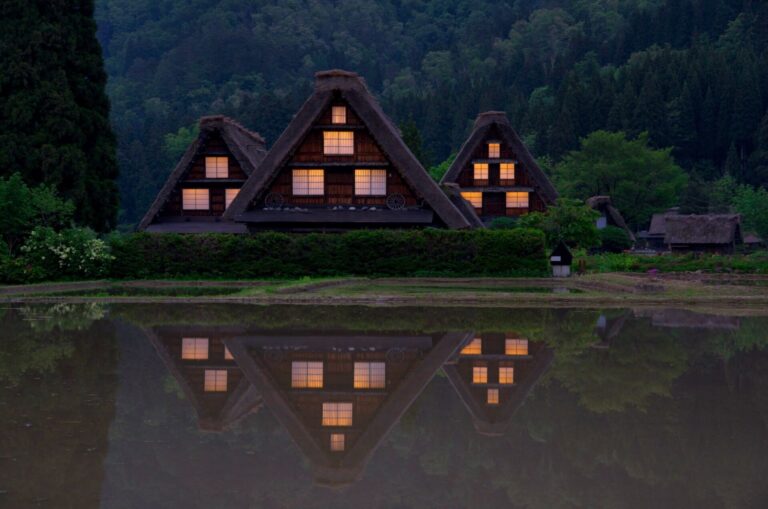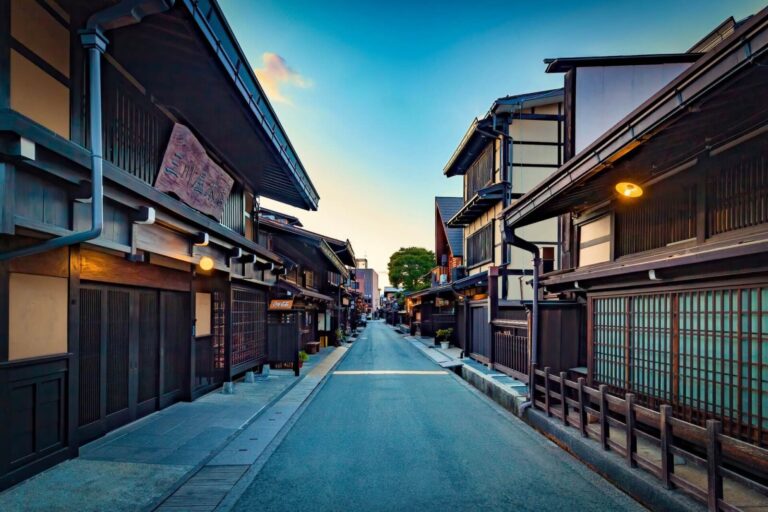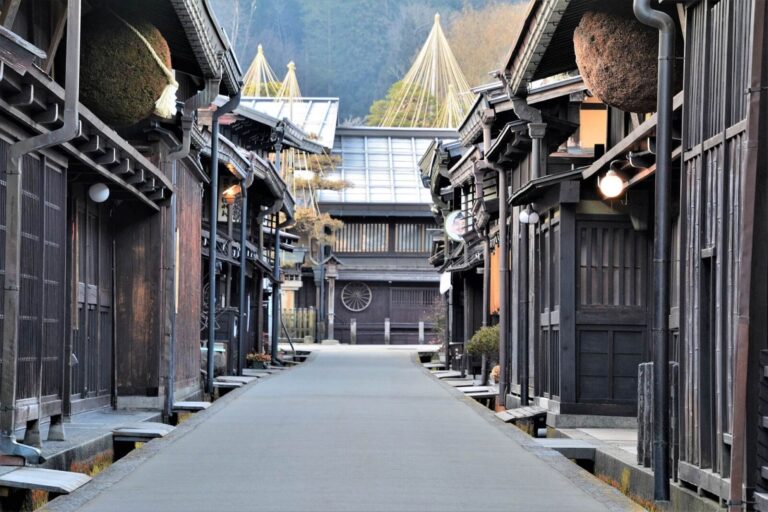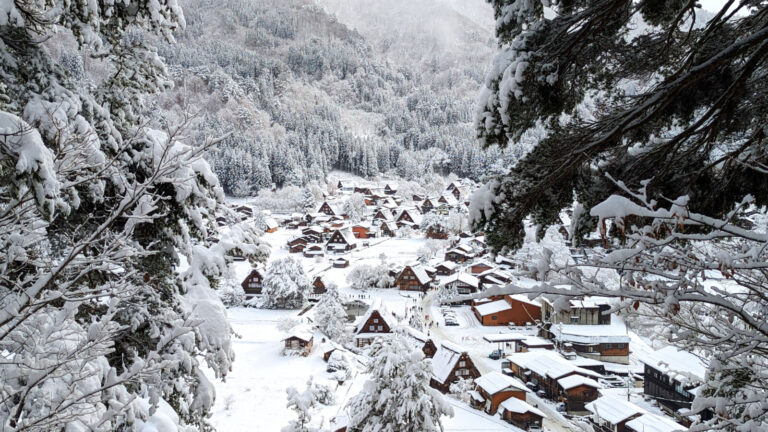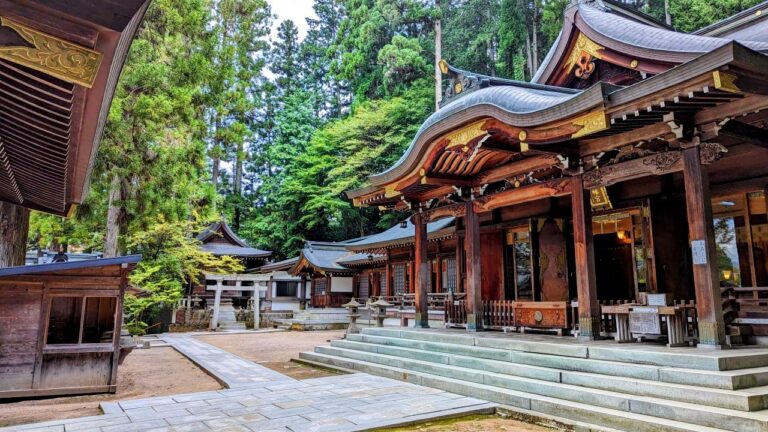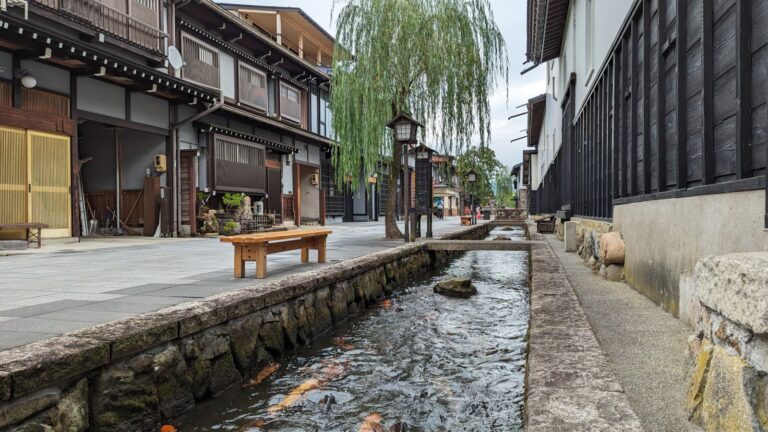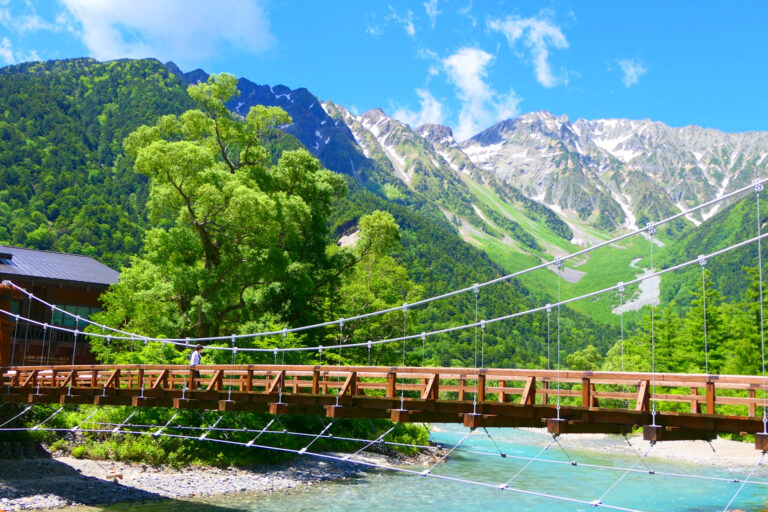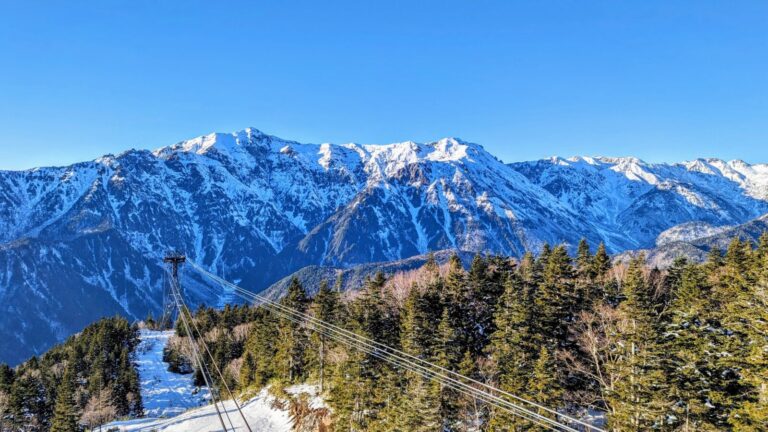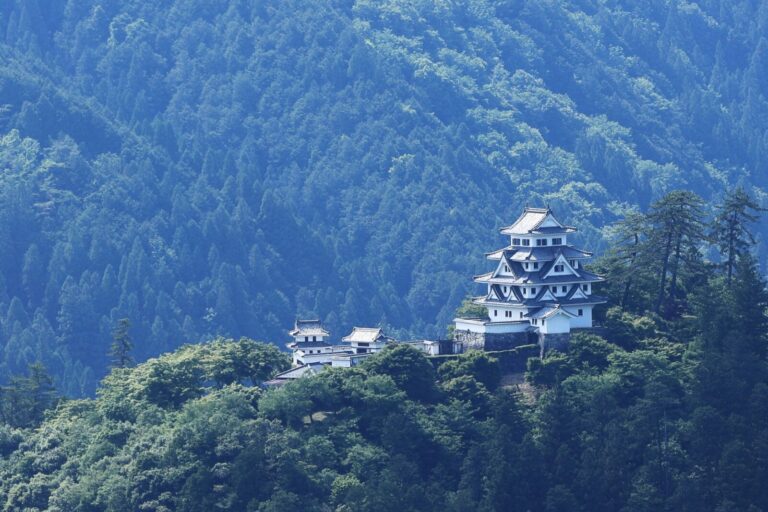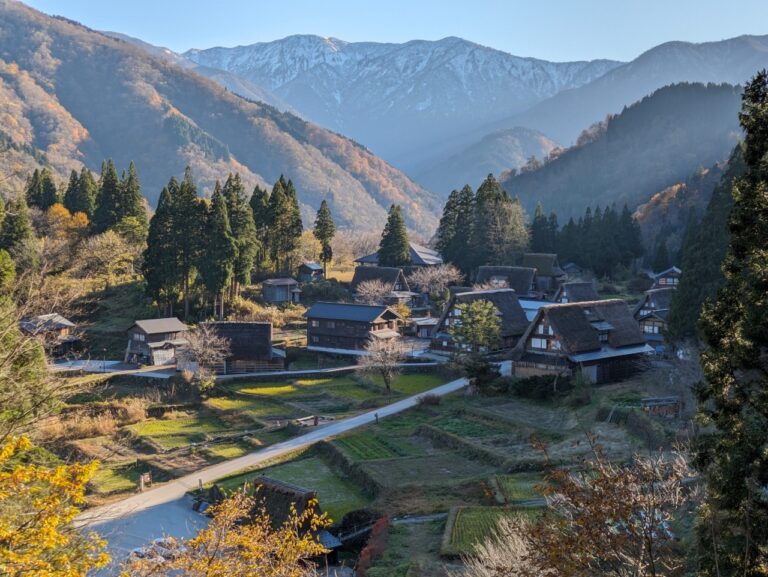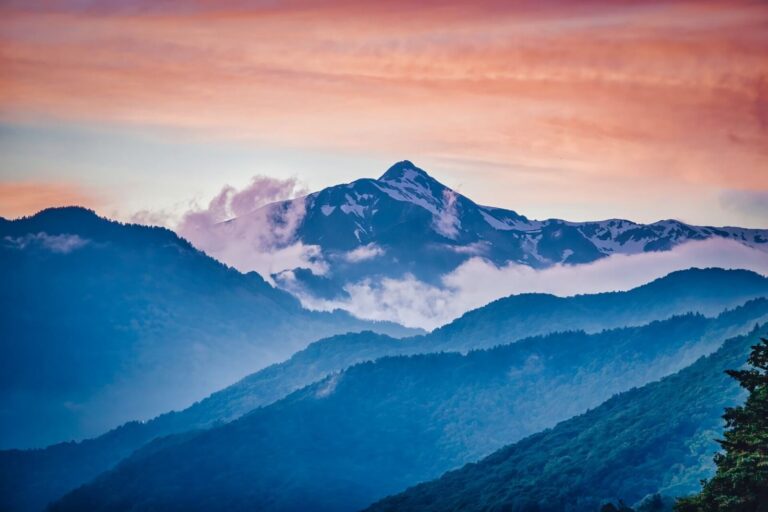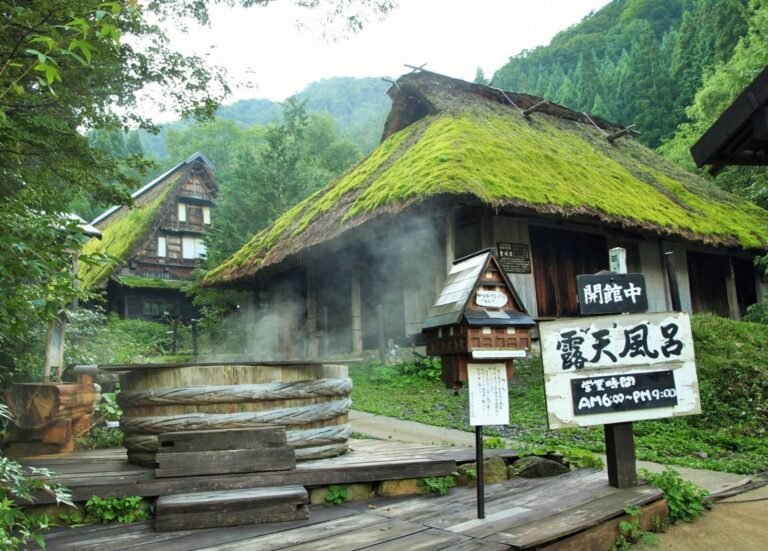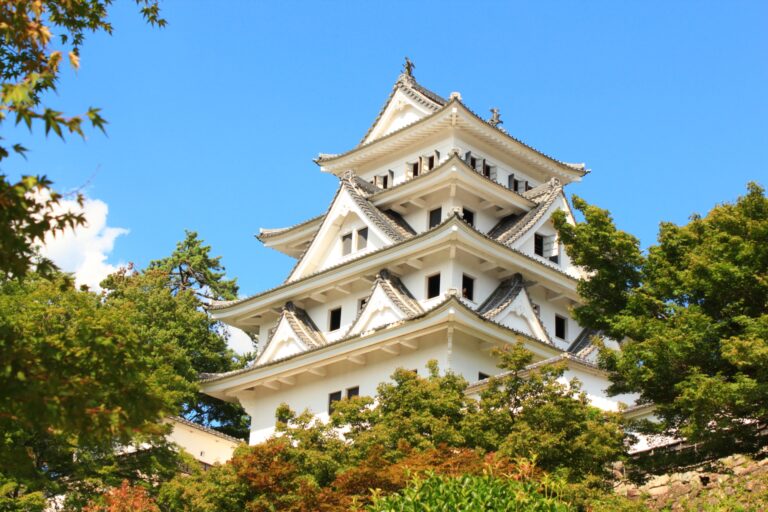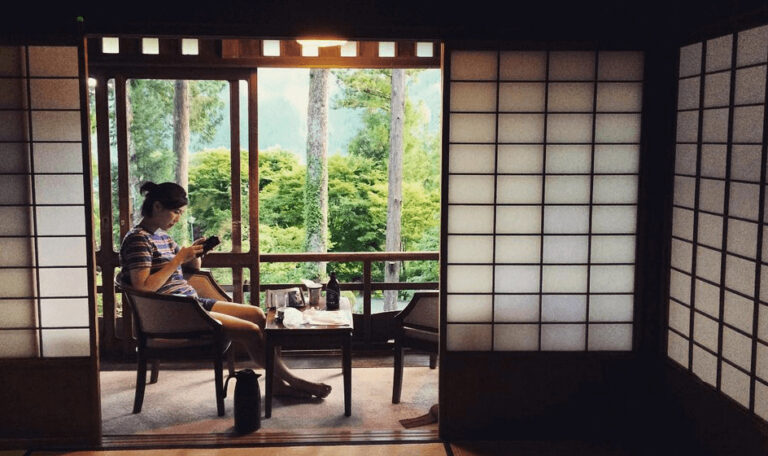Shirakawa-go & Gokayama
Shirakawa-go, the largest of the three famed gassho-zukuri farmhouse villages and designated as a UNESCO World Heritage site in 1995, is nestled in the high mountains of Toyama and Gifu Prefectures. These villages retain their historic character and traditional ways of life, most pronounced in their ‘gassho-zukuri’ thatched-roofed farmhouses. Named for the steep pitch of their roofs, resembling hands held together in prayer (‘gassho’), many farmhouses are over 250 years old. Built to withstand heavy snowfall, these designs demonstrate ingenuity in adapting to the landscape.
Adapted to withstand heavy snowfall, the gassho-zukuri design showcases the ingenuity of past generations in creating self-sufficient communities. Recognized as a UNESCO World Heritage site in 1995, Shirakawa-go and Gokayama attract numerous visitors, with Ogimachi being the most popular. For a quieter experience, Suganuma and Ainokura provide equally captivating insights into this cultural heritage.
Explore the rich history and beauty of these villages through the sections below:
— Discover the Beauty and Heritage of Shirakawa-go & Gokayama Villages
— Experience ‘Satoyama’: A Return to Tradition & Balance
— Visit Shirakawa-go: Book A Private Charter
— From Shirakawa-go: Visit Takayama
— From Shirakawa-go: Visit Kamikochi & Okuhida Onsen
Whether you seek cultural immersion or serene natural beauty, Shirakawa-go and Gokayama offer a remarkable journey into Japan’s historic heart. Discover the timeless charm and ingenuity of these villages, where tradition and nature coexist in perfect harmony.
DISCOVER THE BEAUTY AND HERITAGE OF SHIRAKAWA-GO & GOKAYAMA VILLAGES
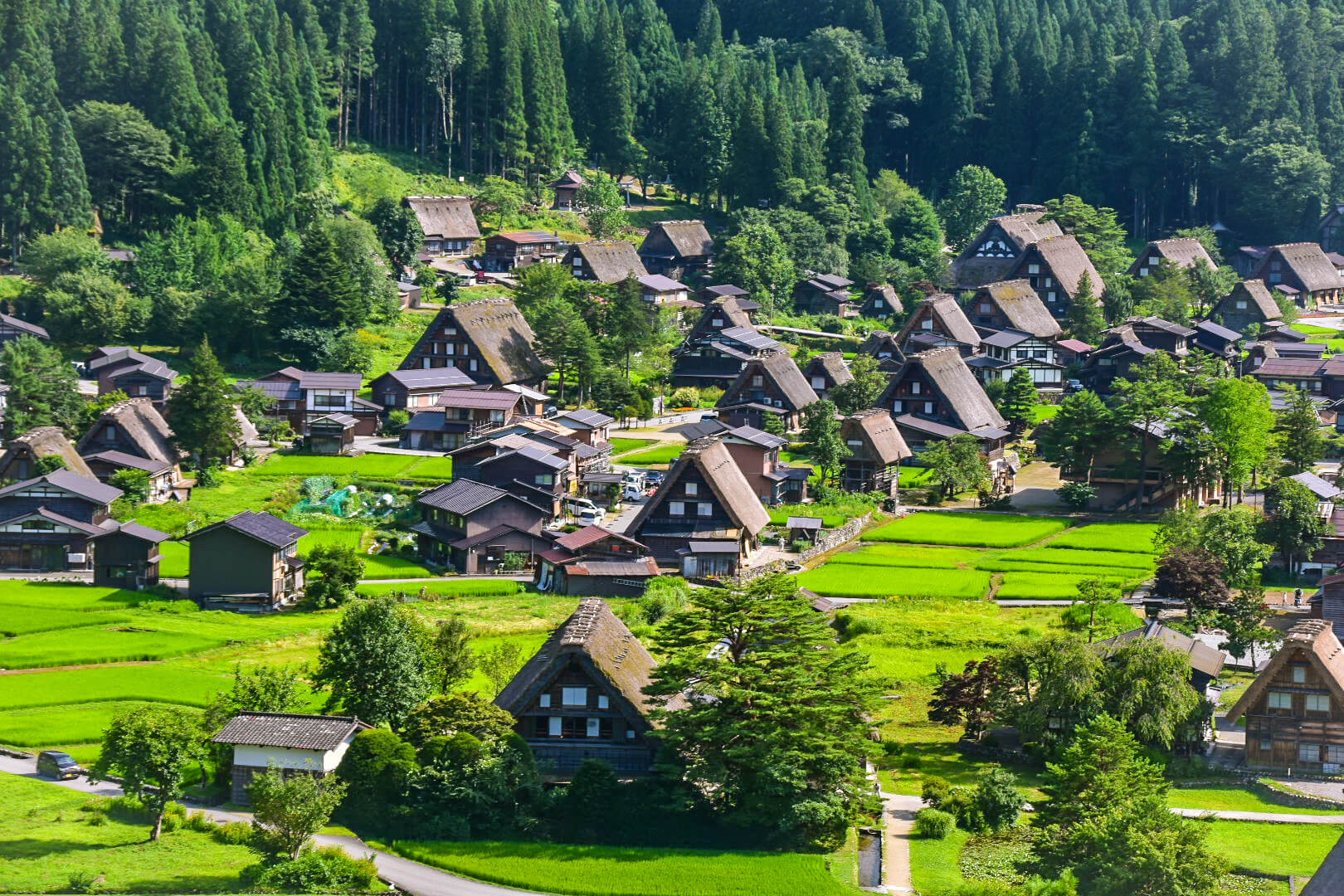
Shirakawa-go, the largest of the three famed gassho-zukuri farmhouse villages, and designated as a UNESCO World Heritage site in 1995, is nestled in the high mountains of Toyama and Gifu Prefectures. These villages, along with Suganuma and Ainokura in Gokayama, retain their historic character and traditional ways of life, most pronounced in their ‘gassho-zukuri’ thatched-roofed farmhouses. Named for the steep pitch of their roofs, resembling hands held together in prayer (‘gassho’), many farmhouses are over 250 years old. Built to withstand heavy snowfall, these designs demonstrate ingenuity in adapting to the landscape.
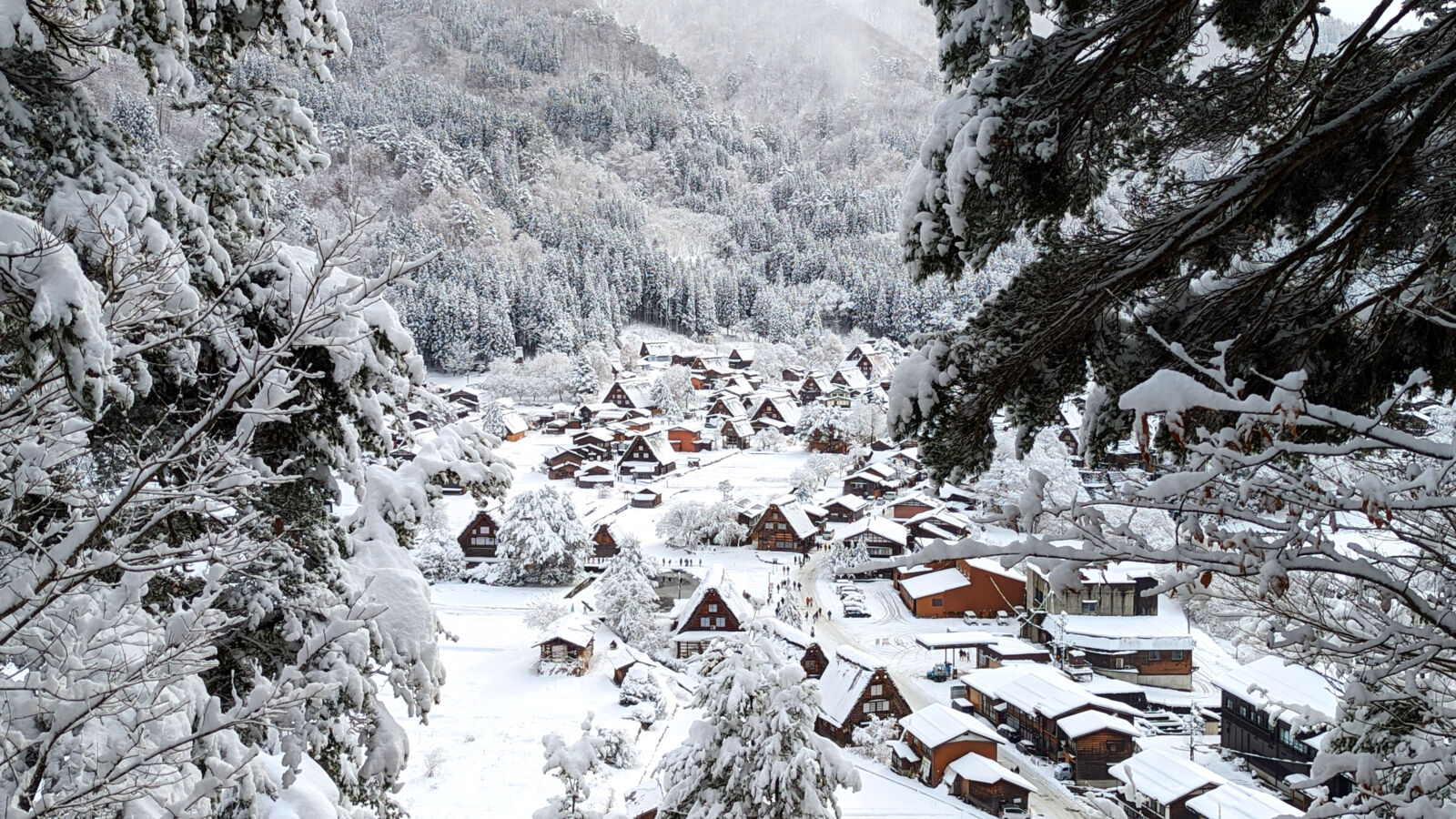
The steep roofs not only resist snowfall but also create large indoor work areas in the attics for winter silk cultivation and other industries. Today, the farmhouses, protected and celebrated globally, continue as family homes and traditional workshops, with some converted into museums, restaurants, cafes, and guesthouses.


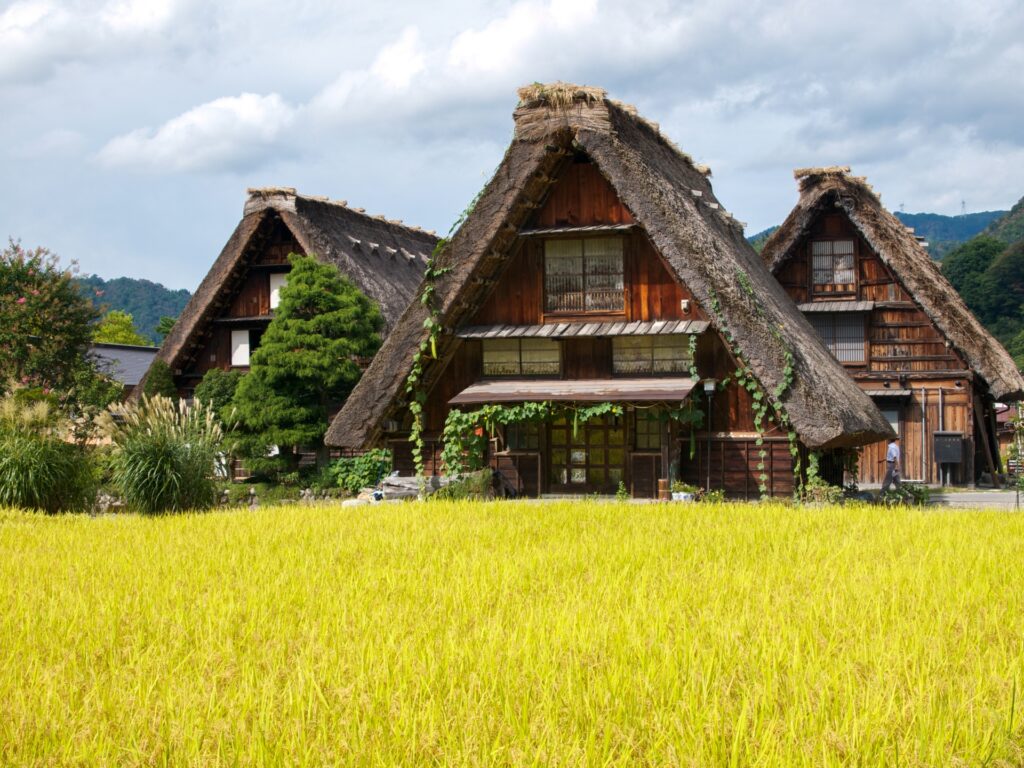

Separated by rice fields and raised dirt walkways, the farmhouses appear to float in the landscape, forming villages that border the heavily forested mountains and hillsides. The serene beauty of the surrounding nature, combined with the architectural charm of the farmhouses, creates a picturesque setting that transports visitors back in time.
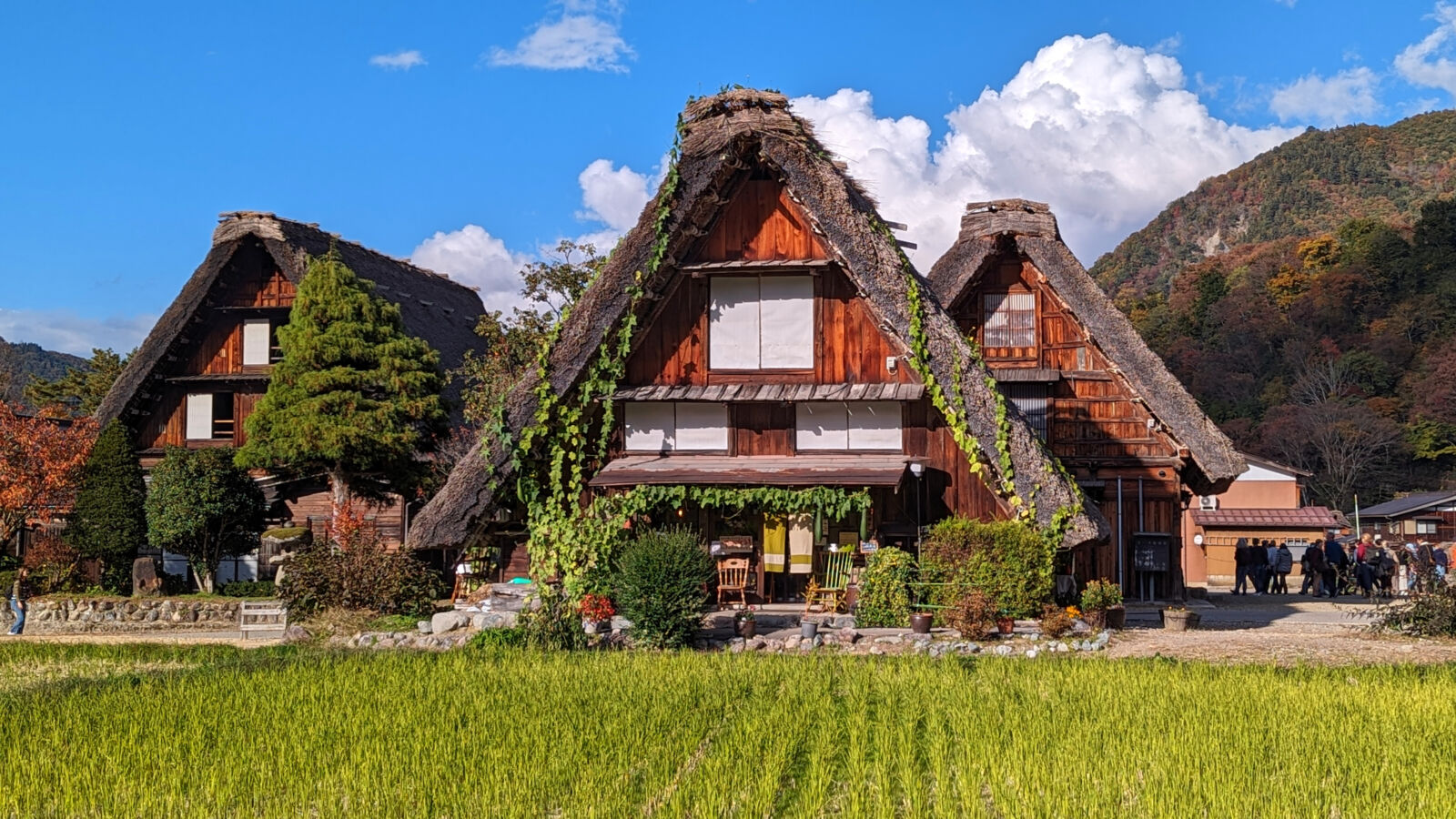
The villages also host a variety of cultural festivals throughout the year, which showcase traditional music, dance, and crafts. These festivals provide a unique opportunity for visitors to experience the vibrant culture and community spirit of Shirakawa-go. The autumn and winter seasons, in particular, offer stunning landscapes with colorful foliage and snow-covered roofs, enhancing the magical atmosphere of these historic villages.
Under the World Heritage listing of 1995, the three villages of Ogimachi, Suganuma, and Ainokura have been afforded protected status and recognized for their outstanding cultural value. Ogimachi, located in Shirakawa-go, is the largest and most accessible, attracting the majority of tourists. It offers many restaurants, shops, guesthouses, and facilities, and is easily reachable by buses from Takayama, Toyama, and Kanazawa. Despite its popularity, wandering just a few minutes away from the main areas can lead to quieter, more serene spots.
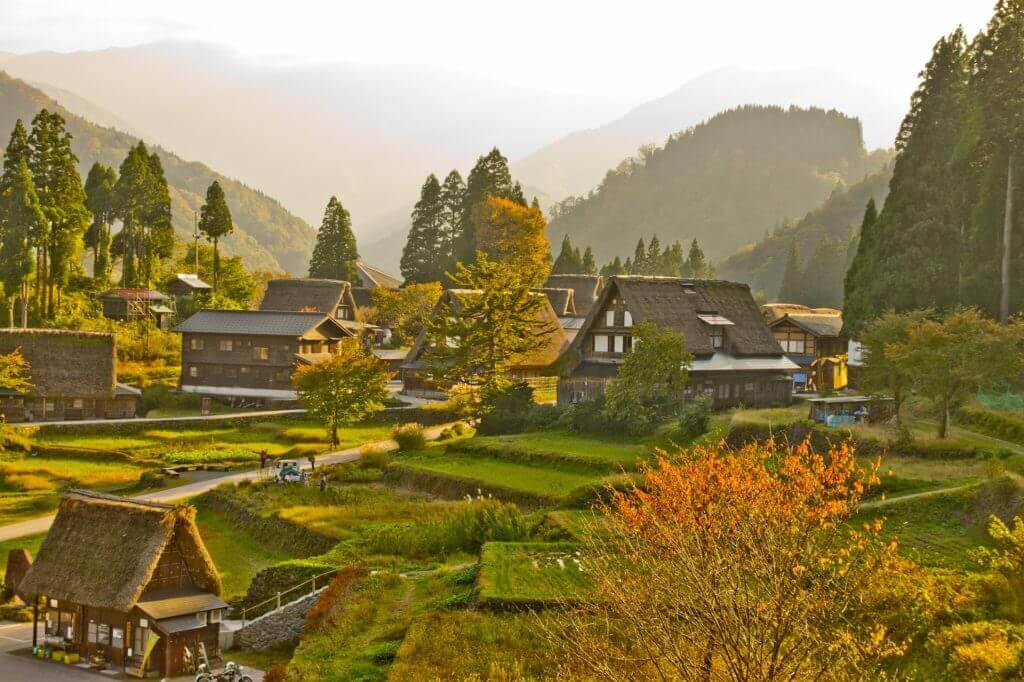
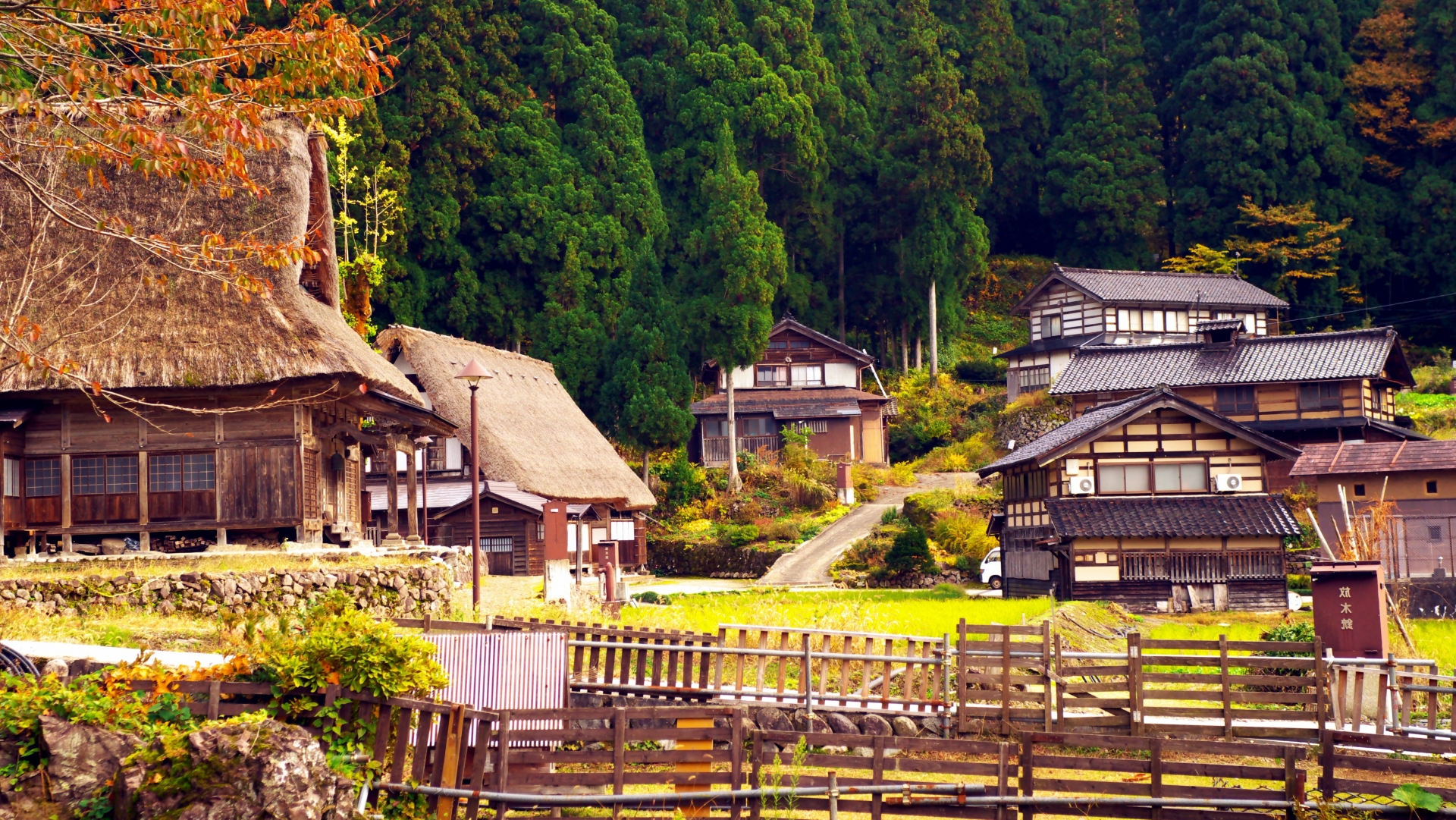
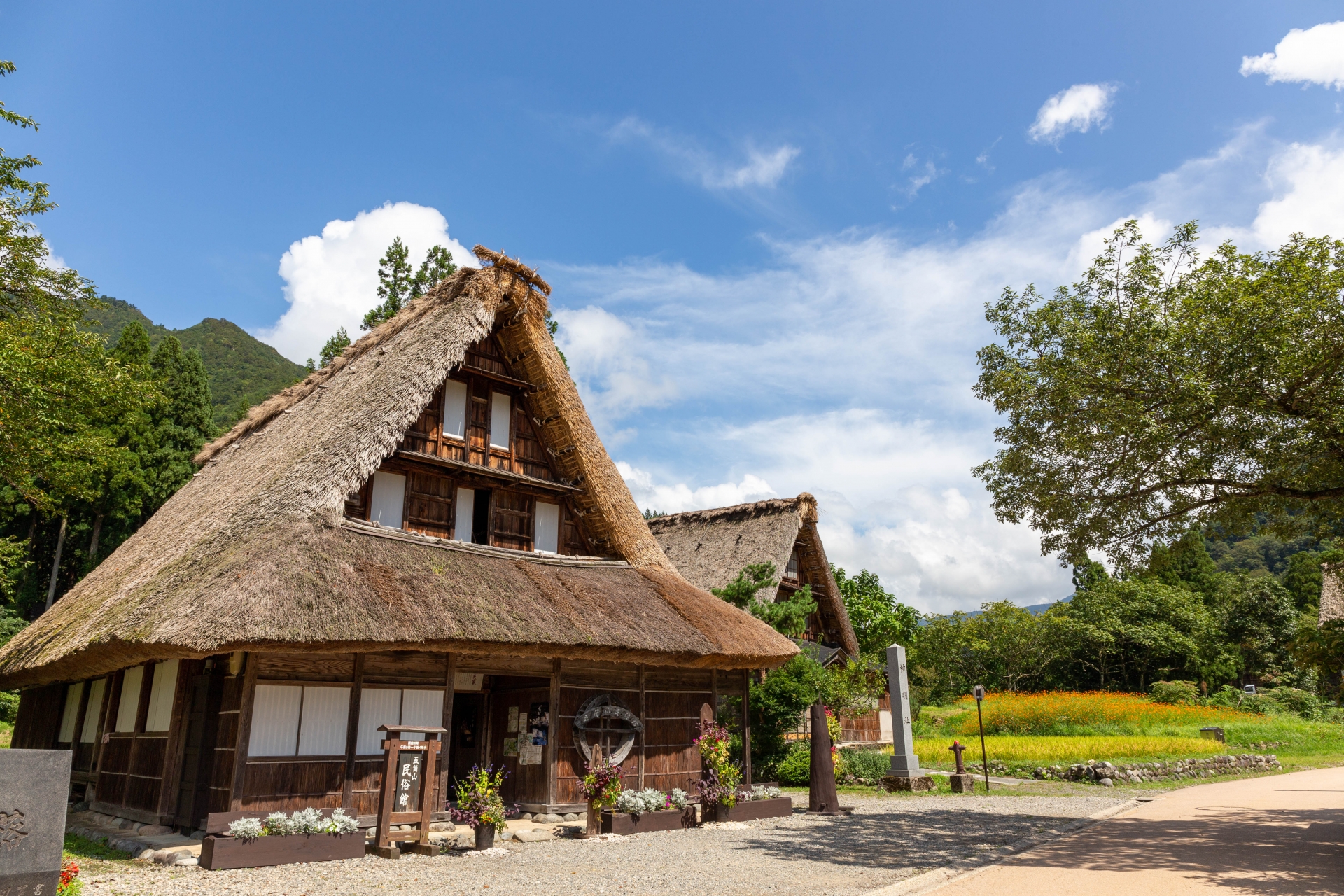
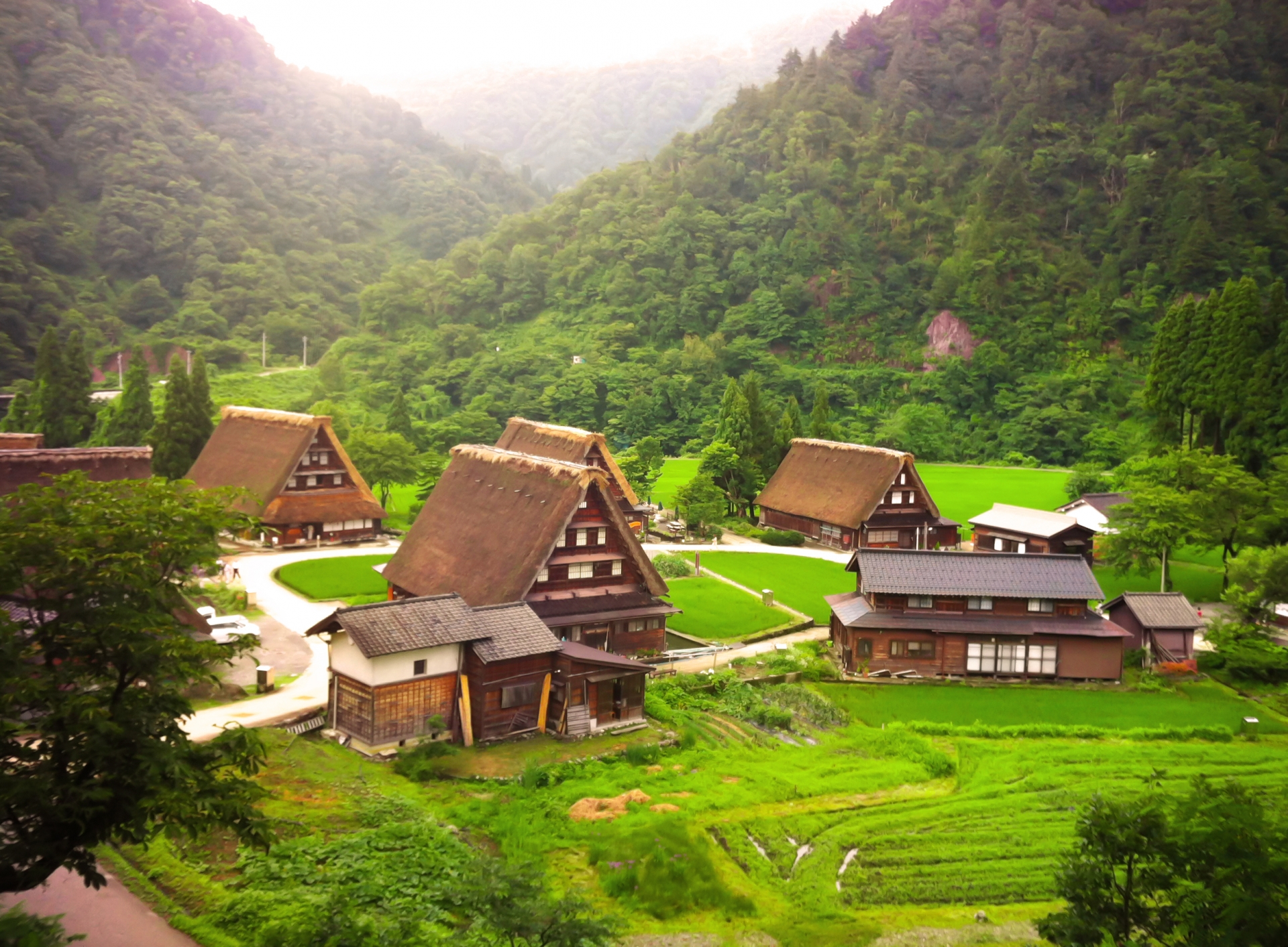
Suganuma and Ainokura, located in Gokayama, are smaller and quieter, providing a more tranquil experience. Suganuma, with its nine gassho-zukuri farmhouses, is often overlooked by large tour groups, making it ideal for those seeking to avoid crowds. Ainokura, the most remote, is home to around twenty farmhouses and offers a peaceful retreat with fewer visitors and more opportunities to experience a working rural village.
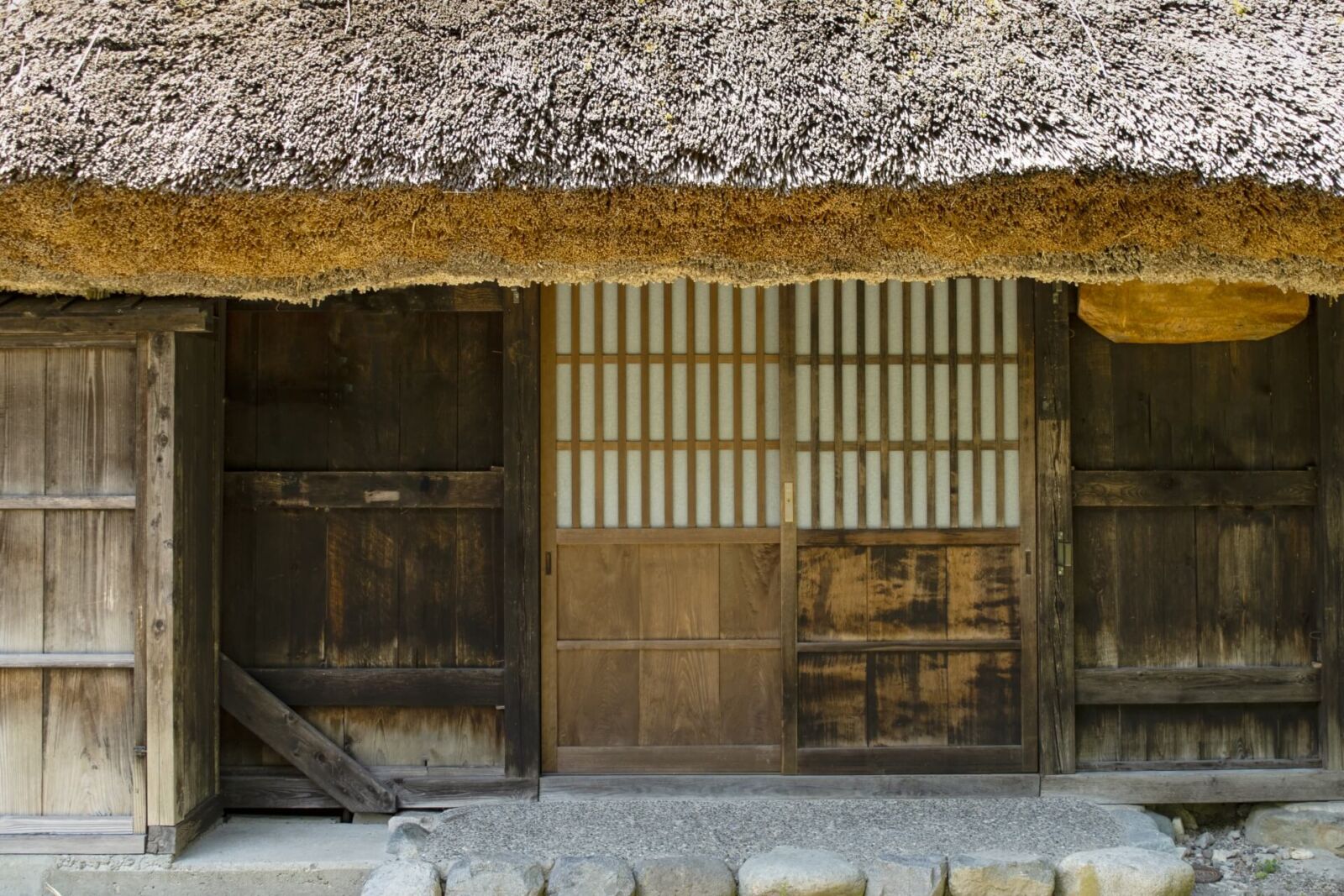
The design and traditional lifestyle adapted to the environment create a harmony between man and nature, recognized by the World Heritage listing. This reflects the Japanese concept of ‘satoyama’ – living sustainably and harmoniously with the environment, as seen in the farmhouses and traditional village life.
For those interested in exploring further, guided tours provide a deep dive into the culture and history of these villages. From Kanazawa, visitors can embark on tours that include both Shirakawa-go and Gokayama, offering a comprehensive look at the region’s heritage. From Takayama, tours focus on Shirakawa-go and the historic charm of Takayama itself.
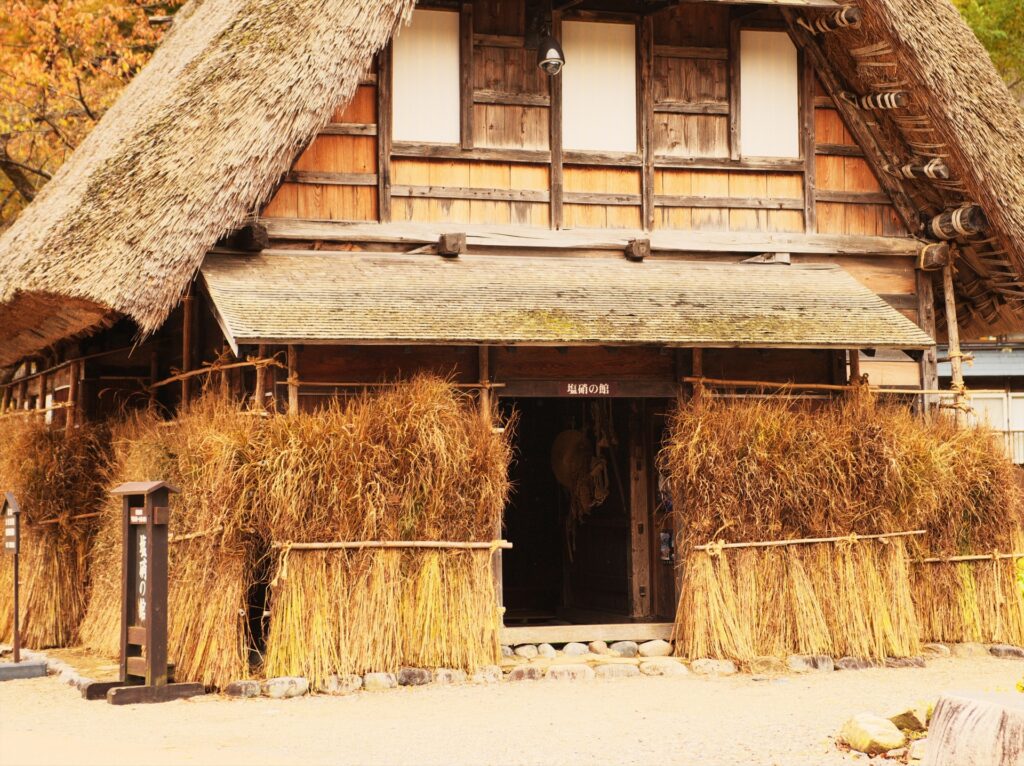
Whether you seek cultural immersion or serene natural beauty, Shirakawa-go and Gokayama offer a remarkable journey into Japan’s historic heart. Discover the timeless charm and ingenuity of these villages, where tradition and nature coexist in perfect harmony.
15 THINGS TO DO & SEE IN SHIRAKAWA-GO
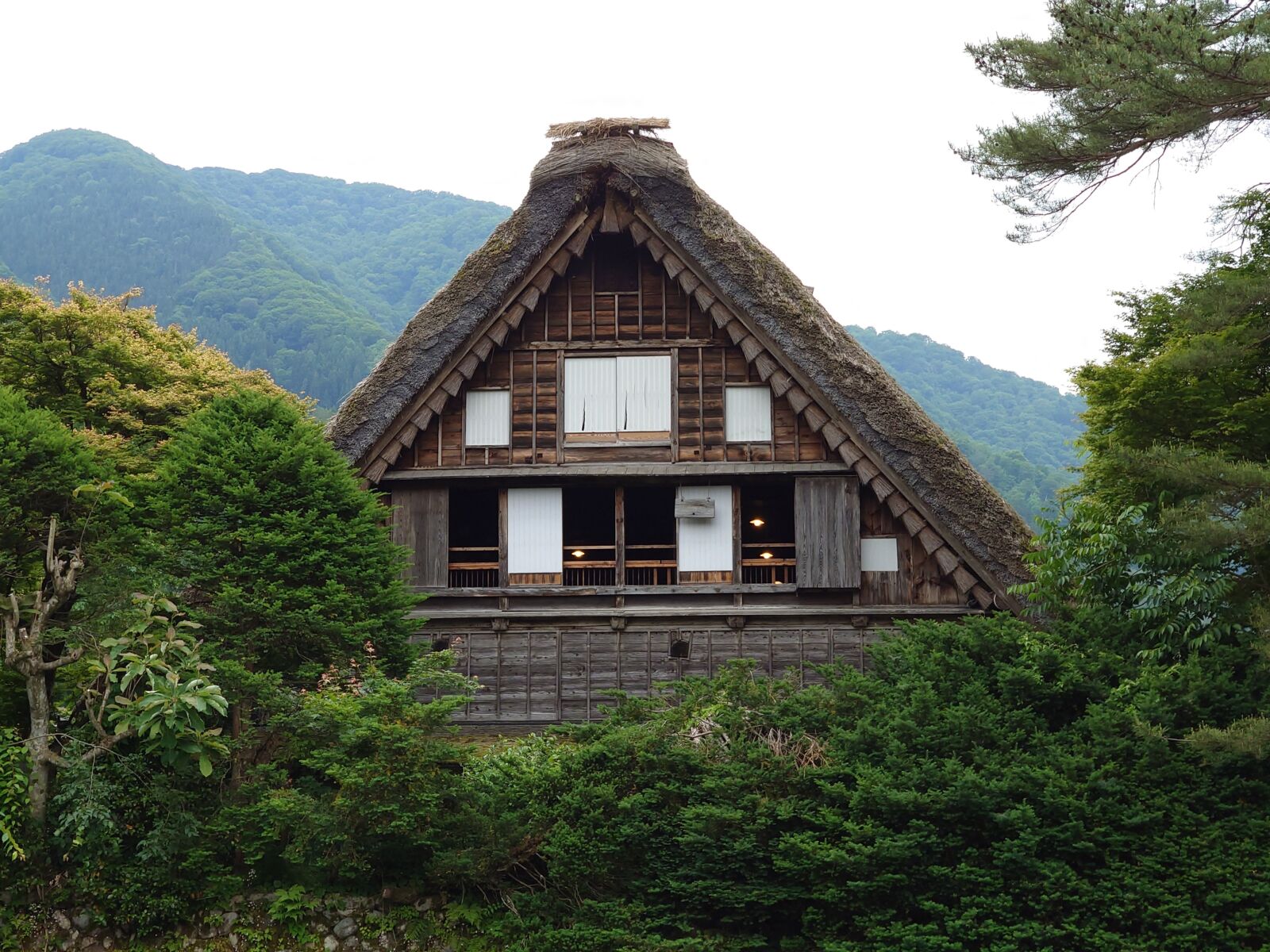
For many if not most Japanese, the word ‘satoyama’ conjures imagery of idyllic rural villages and a slower, healthier way of life in which people live in harmony with the environment. Literally translating as ‘mountain village’, satoyama has no better demonstration than in the villages making-up Shirakawa-go and Gokayama. Awarded World Heritage status for just that reason – as examples of human ingenuity and the ability of man to live in harmony with our environment – the villages are hugely popular destinations that can be enjoy as day-trips from Takayama, Toyama or Kanazawa, or overnight visits by staying in one of the farmhouses. Our ’15 Things To Do In Shirakawa-go & Where To Stay’ page has lots of suggestions of the best things to do and see when there along with accommodation listings in the area.
JOIN OUR SHIRAKAWA-GO TOURS
Embark on a journey of discovery and enchantment in Shirakawa-go with our curated tours. Whether you’re a first-time visitor or a returning enthusiast, our tours are designed to reveal the hidden gems and deep-rooted traditions of this picturesque village. With expert guides, exclusive insights, and comfortable transport, each tour promises an unforgettable experience. Ready to see Shirakawa-go through a new lens? Explore our selection of tours and find the perfect adventure to enhance your visit.
From Takayama:
Join our ‘1-Day Tour from Takayama: Explore Scenic Old Japan in Takayama and Shirakawa-go’ and immerse yourself in the timeless beauty of these historic destinations. Experience the charm of Takayama’s old town and the picturesque landscapes of Shirakawa-go, all in one unforgettable day. Book now to discover the heart of Japan’s scenic beauty and cultural heritage with us.
1 Day Tour
| 1-Day Tour from Takayama: Explore Scenic Old Japan in Takayama and Shirakawa-go | |
|
| |
| Period | All Year Round |
| Time | 09:00 – 18:30 |
| Meeting Place | Takayama Station |
| Adult Rate | ¥20,800 / 22,800 |
| Child Rate | ¥12,000 / 14,000 |

From Kanazawa:
Experience a day of cultural immersion with our ‘1 Day Tour from Kanazawa: Shirakawa-go, Gokayama, and Wood Carving Village.’ Journey through the heart of traditional Japan, exploring the UNESCO-listed villages of Shirakawa-go and Gokayama, and the artistry of a local wood carving village. Book your tour now and unlock the timeless beauty and craftsmanship of these historic destinations.
1 Day Tour
| 1 Day Tour from Kanazawa: Shirakawa-go, Gokayama and Wood Carving Village | |
|
| |
| Period | All Year Round |
| Time | 09:00 – 18:00 |
| Meeting Place | Kanazawa Station |
| Adult Rate | ¥23,800 / 25,800 |
| Child Rate | ¥15,000 / 17,000 |

Private Tours:
Looking for a more private adventure? Embark on our exclusive private tours from Takayama and Kanazawa. Delve into the rich tapestry of Japan’s culture and history, from the tranquil landscapes of traditional villages to the historic streets of Kanazawa and the scenic beauty of Shirakawa-go. Our tours blend guided exploration with personal discovery, allowing you to intimately experience Japan’s most cherished destinations. Book your private journey now and uncover the heart of Japan in unparalleled style and comfort.
Private Tour
| [START FROM TAKAYAMA] Private Takayama & Shirakawa-go Tour | |
|
| |
| Period | All Year Round |
| Time | 09:00 – Takayama Area |
| Meeting Place | Takayama Station Area |
| Price | ¥211,200 ~ / group |

EXPERIENCE ‘SATOYAMA’: A RETURN TO TRADITION & BALANCE
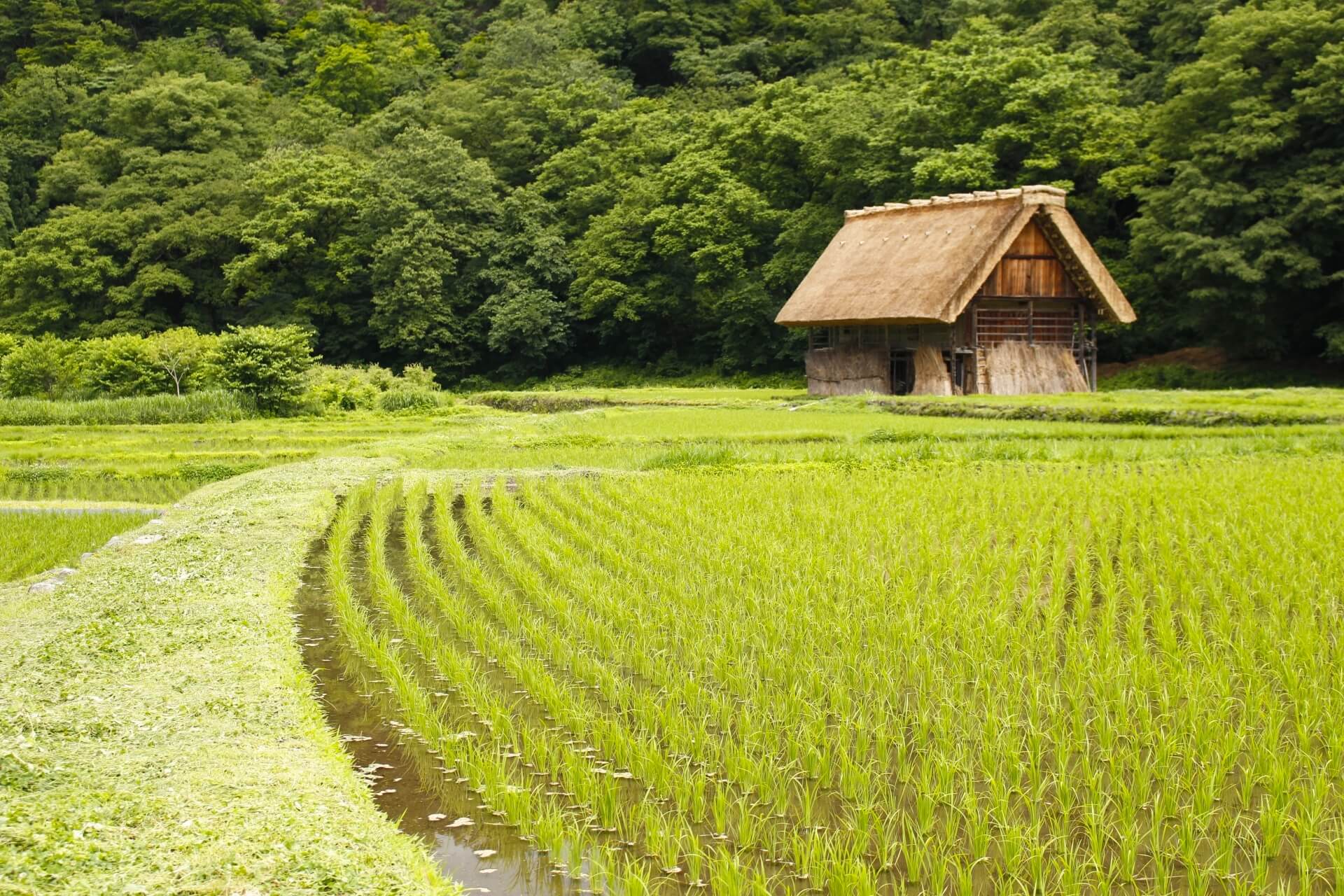
World Heritage status has brought global attention to these villages, recognizing “a traditional way of life perfectly adapted to the environment and people’s social and economic circumstances.” Simply put, the villages were deemed of global importance due to their ongoing traditional lifestyles, including the ingenious design of the ‘gassho-zukuri’ farmhouses, which embody a successful and harmonious relationship between people and the environment upon which they depend.
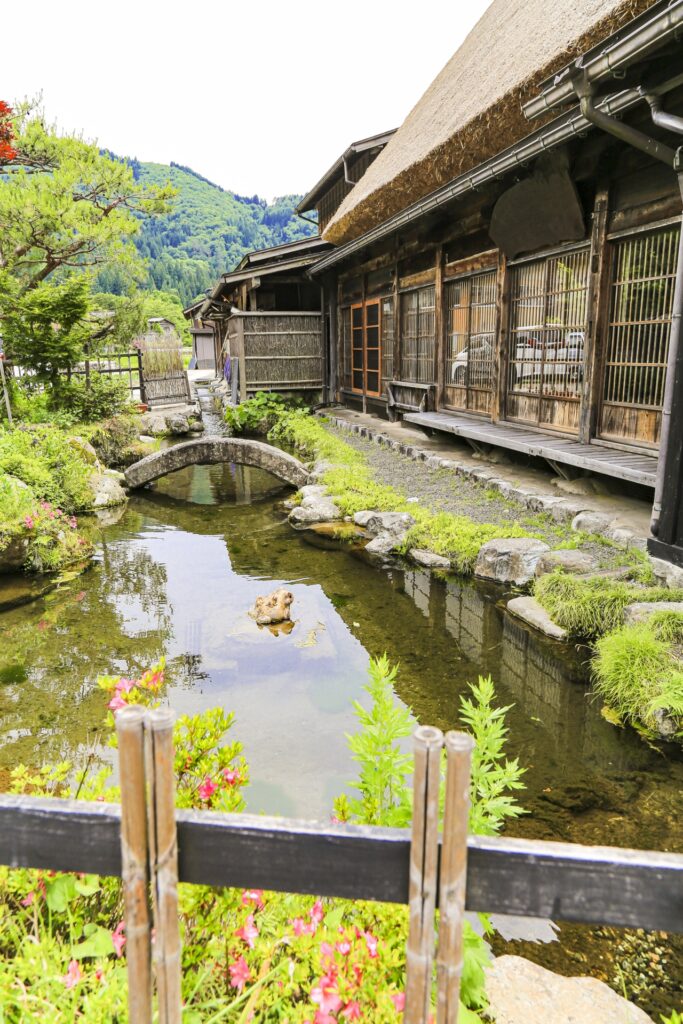
This recognition touches upon a Japanese concept known as ‘satoyama’ – a term often heard in Japan. Regularly used in tourism campaigns, satoyama is a broad concept with the flexibility to mean different things to different people; but at its core, it speaks of harmony, balance, and sustainability through a return to traditional practices.
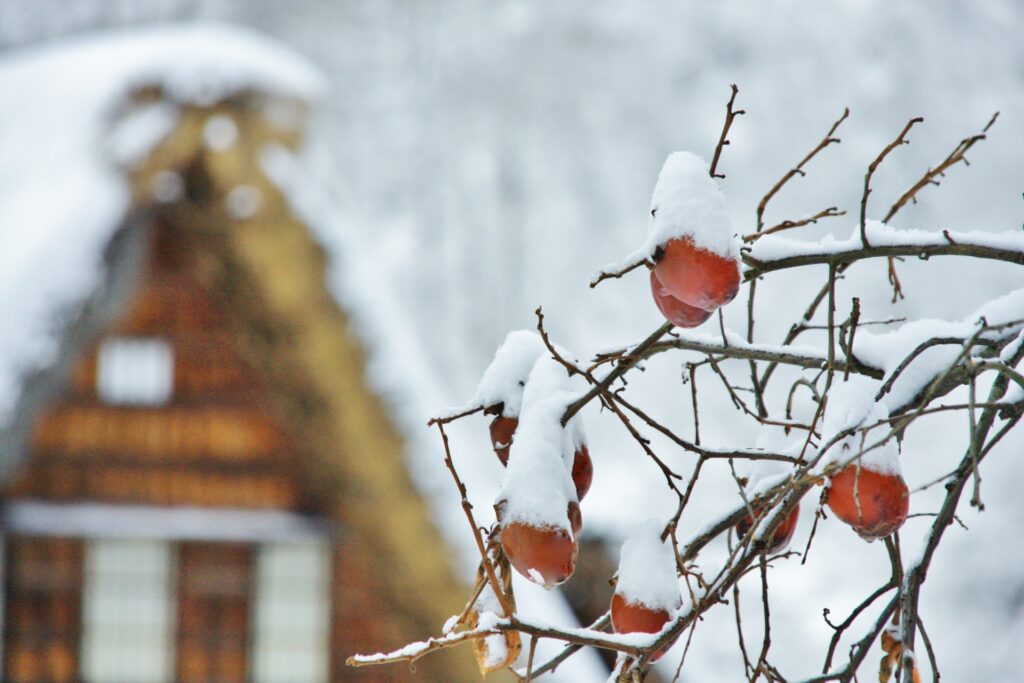
In a purely academic sense, satoyama refers to mixed-use landscapes, including farming fields, woodland, irrigation systems, and the villages they support. In this regard, the villages of Shirakawa-go and Gokayama are exemplary examples of satoyama.
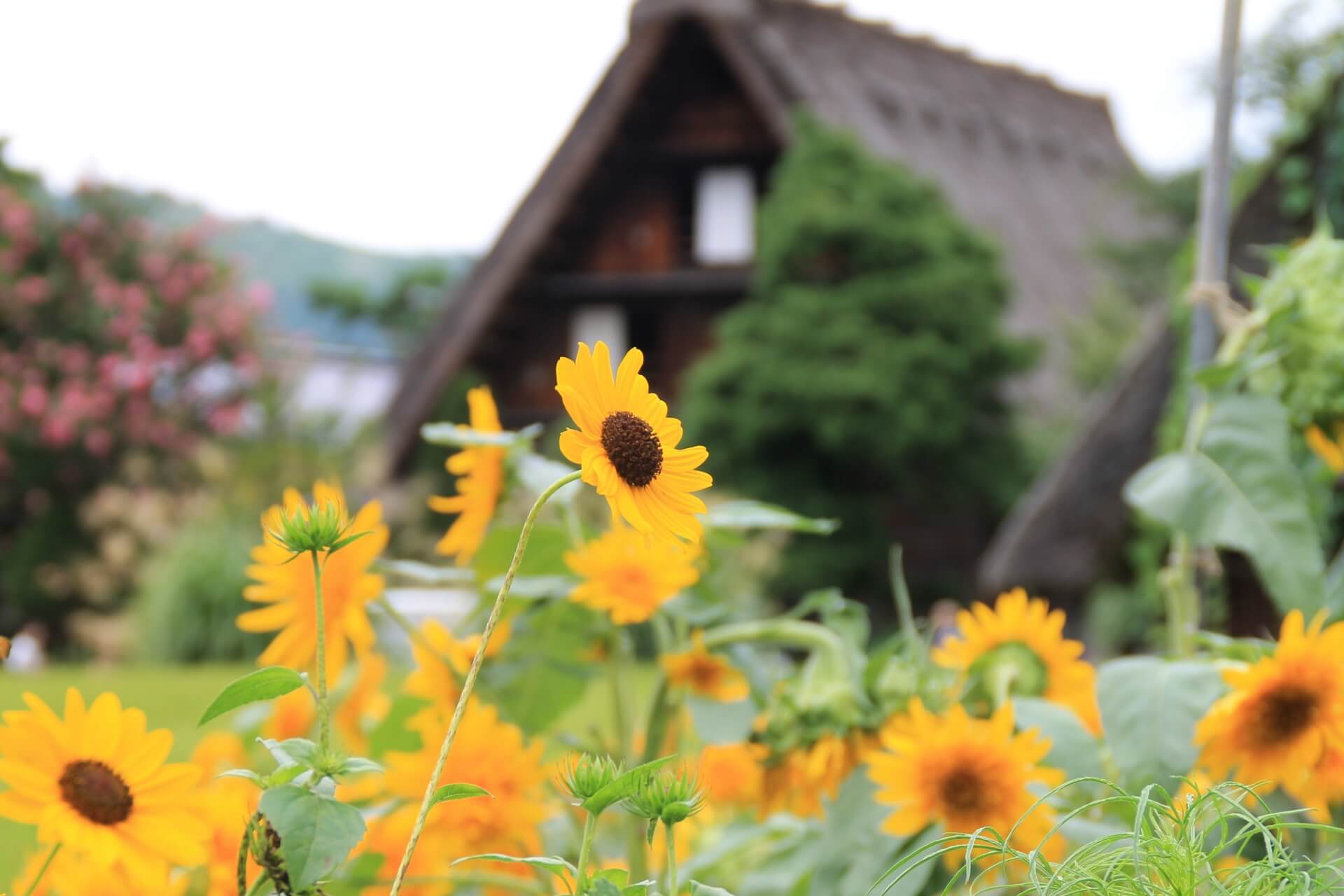
For Japanese people, such a definition recalls picturesque villages set amongst idyllic vistas and unspoiled nature. It is the essence of Studio Ghibli movies and a highly evocative motivation for Japanese to venture from the cities into Japan’s rural heartland.
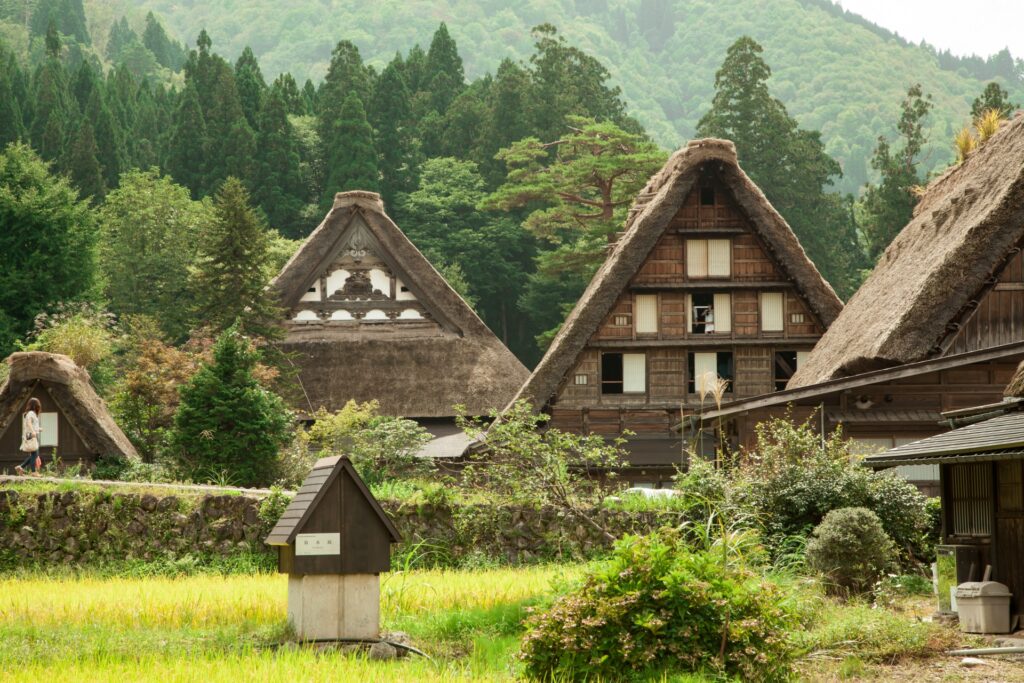
The villages of Shirakawa-go and Gokayama are some of the best-preserved examples of satoyama, recognized by residents who pushed for conservation by law. During Japan’s rapid post-war development, local villagers saw the threat to their traditional way of life and, in the early 1970s, initiated a movement based on the principles of “Do not sell,” “Do not rent,” and “Do not destroy.” A consensus was reached among residents, leading to the establishment of the Association to Protect the Natural Environment of Shirakawa-go, Ogimachi Village.
Efforts by local people to protect their way of life were rewarded in 1976 with the protection of Ogimachi as a place of “Nationally Important Traditional Buildings,” a process that ultimately led to the inscription of Ogimachi, Suganuma, and Ainokura on the World Heritage List in 1995.
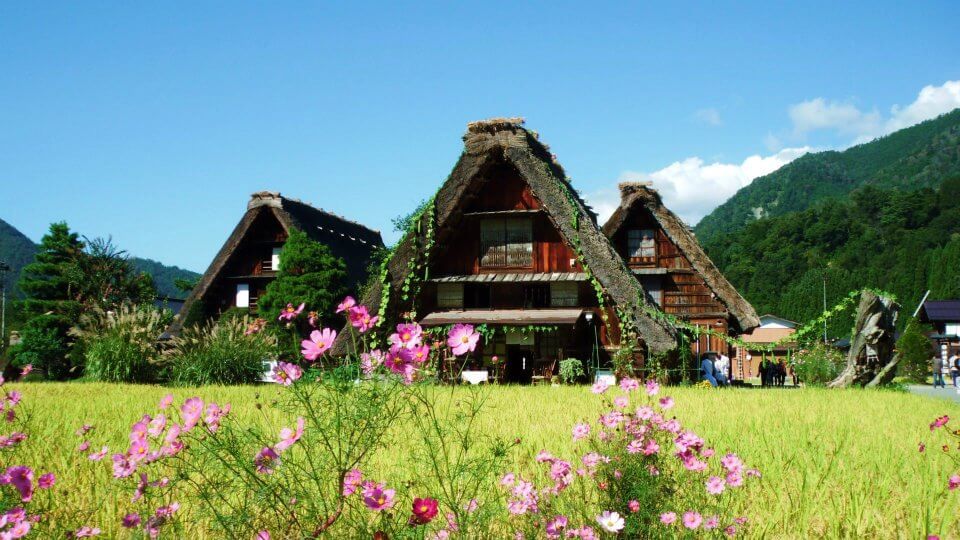
Thanks to the active involvement of the community and the protections they secured, the villages of Shirakawa-go and Gokayama retain much of their traditional character and practices. They are undoubtedly the most famous repositories of satoyama in Japan. While the term is fluid and can be molded to suit various needs, satoyama holds a strong emotional pull for Japanese and offers international visitors an ideal worth exploring while in Central Japan.
VISIT SHIRAKAWA-GO: BOOK A PRIVATE CHARTER
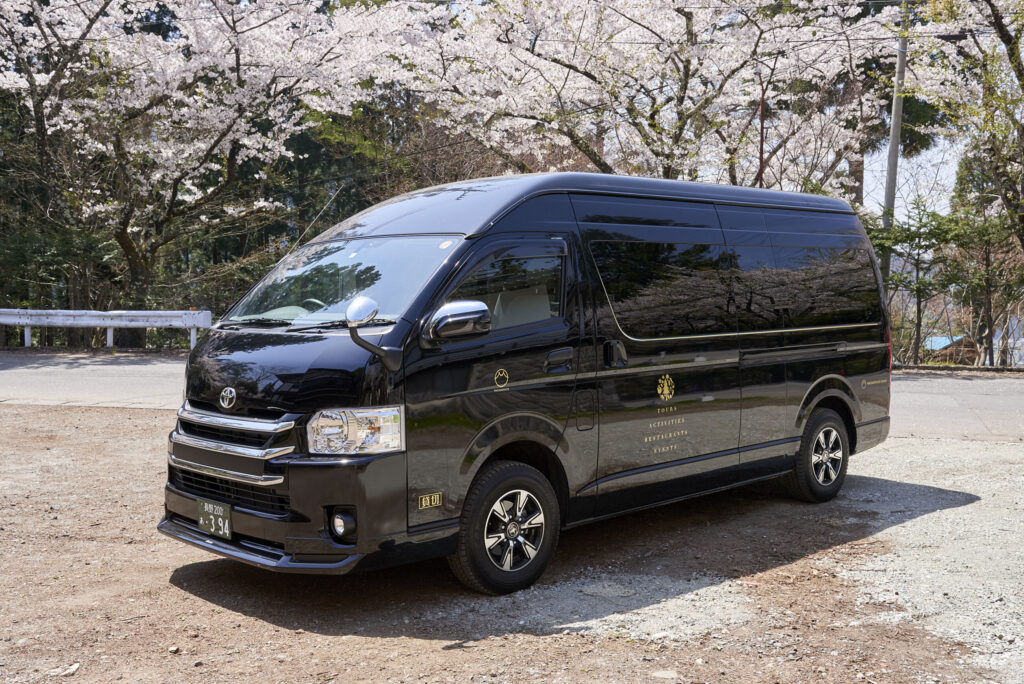
For guests wanting to visit Shirakawa-go and Gokayama in more comfort than public transport, we offer private transport to and from any destination in the region. Based in Nagano and operating all year round, our services are designed to help you get the most out of your time in the area, including lunch at great local restaurants and accommodation at a ryokan (traditional guesthouse), where you can enjoy Japan’s renowned hospitality and local cuisine.

Our drivers and vehicles are fully certified, allowing us to transport you to and from your preferred destinations, in combination with any activity that suits your interests and schedule. All vehicles are fitted with a protective screen – separating the driver from passenger and luggage area – and our drivers wear protective masks, allowing you to move between your destinations in comfort and safety.

For guests wanting to visit Shirakawa-go, we can arrange visits to any or all of the three villages—Ogimachi, Suganuma, and Ainokura—along with other nearby destinations, including Kanazawa, Takayama, Kamikochi, Kurobe Gorge, the Tateyama-Kurobe Alpine Route, or any location of your choice. Visiting the World Heritage-listed villages of Shirakawa-go and Gokayama is one of Central Japan’s most enjoyable experiences.
Whether you’re interested in exploring the historic farmhouses, immersing yourself in local culture, or simply enjoying the beautiful natural landscapes, our private charter service offers a personalized and flexible way to experience these remarkable villages. We’d love to be part of your journey and help you discover even more of what Central Japan has to offer!
If you wish to inquire more, please see our Charters Page.
[START FROM TAKAYAMA] Private Takayama & Shirakawa-go Tour / all year round
Private Tour
| [START FROM TAKAYAMA] Private Takayama & Shirakawa-go Tour | |
|
| |
| Period | All Year Round |
| Time | 09:00 – Takayama Area |
| Meeting Place | Takayama Station Area |
| Price | ¥211,200 ~ / group |

Immerse yourself in a deeply personalized exploration with our Private Tour to Shirakawa-go from Takayama, a journey that promises an intimate encounter with Japan’s cultural heart. Tailored exclusively for you, this tour offers an unrivaled opportunity to delve into the enchanting worlds of Takayama and the UNESCO-listed Shirakawa-go at your own pace, guided by an expert dedicated solely to your experience. Discover the historic Takayama Jinya, revel in the serene beauty of Shirakawa-go’s traditional Gassho-zukuri houses, and savor the flexibility and privacy that only a private tour can offer. This is your unique voyage into the essence of Japanese heritage, designed to provide a profound and personalized connection with each destination. Ready to embark on an unforgettable private journey that highlights the best of Takayama and Shirakawa-go? Reserve your exclusive tour today and step into a journey tailor-made for lasting memories.
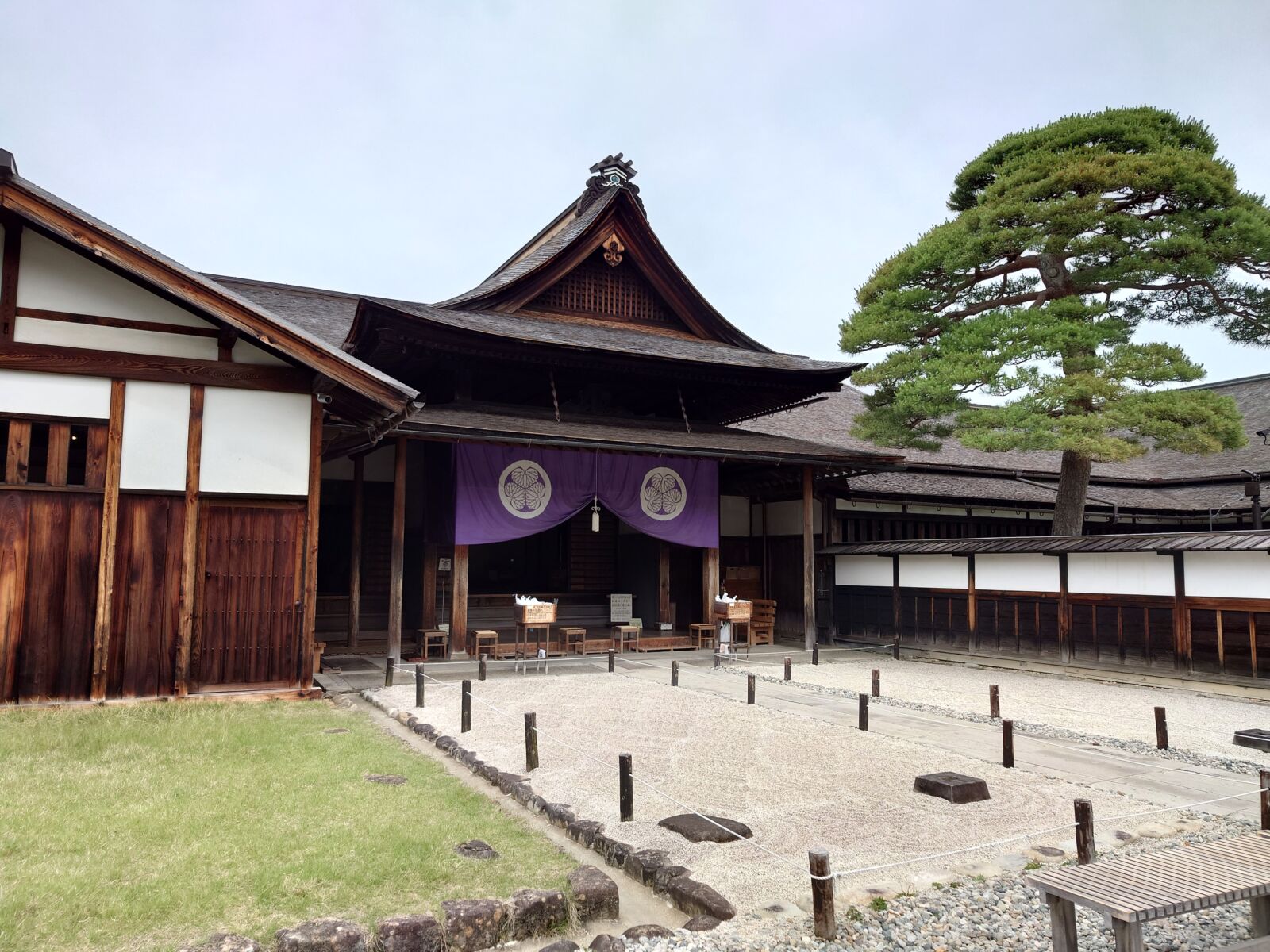
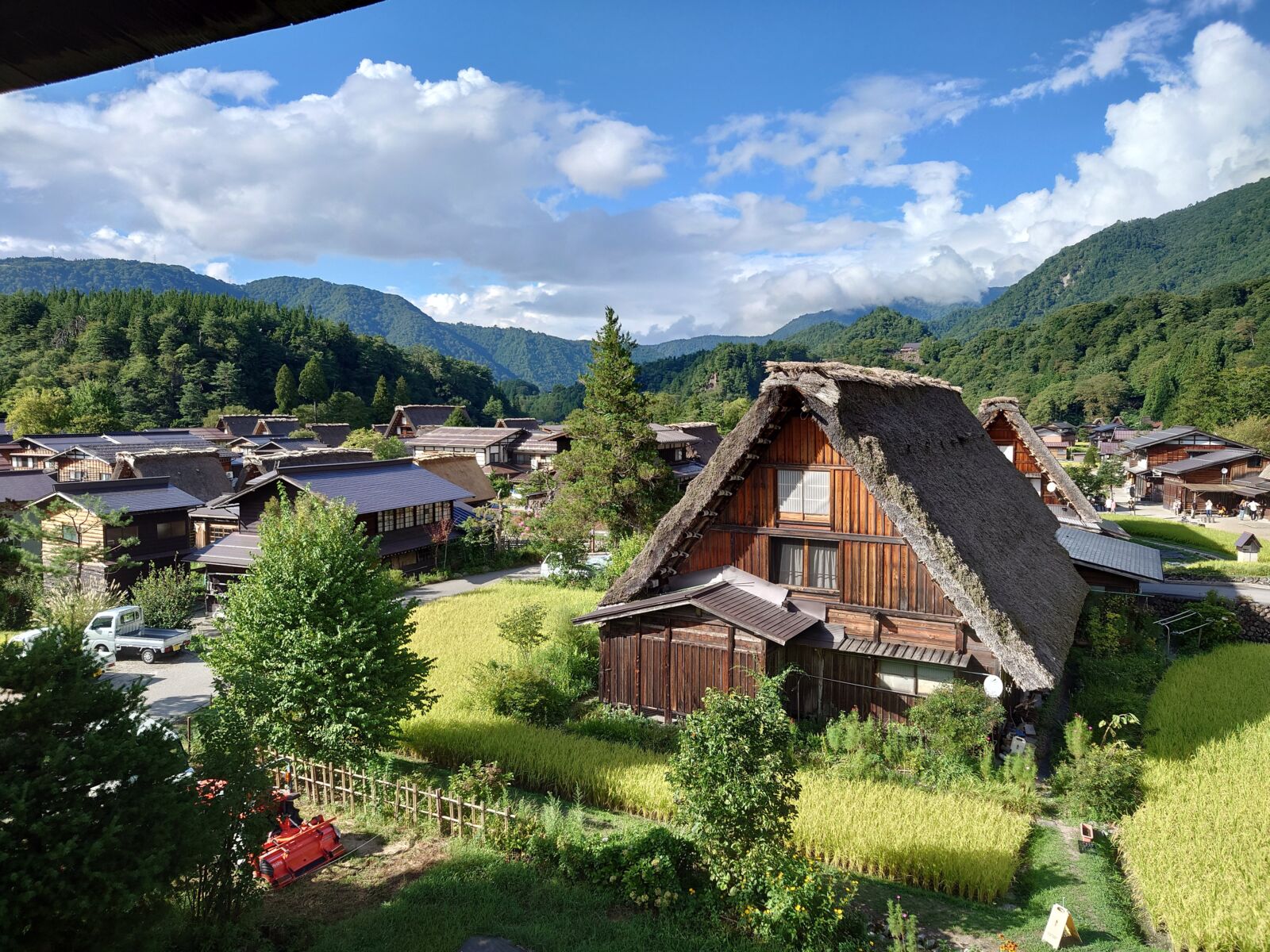
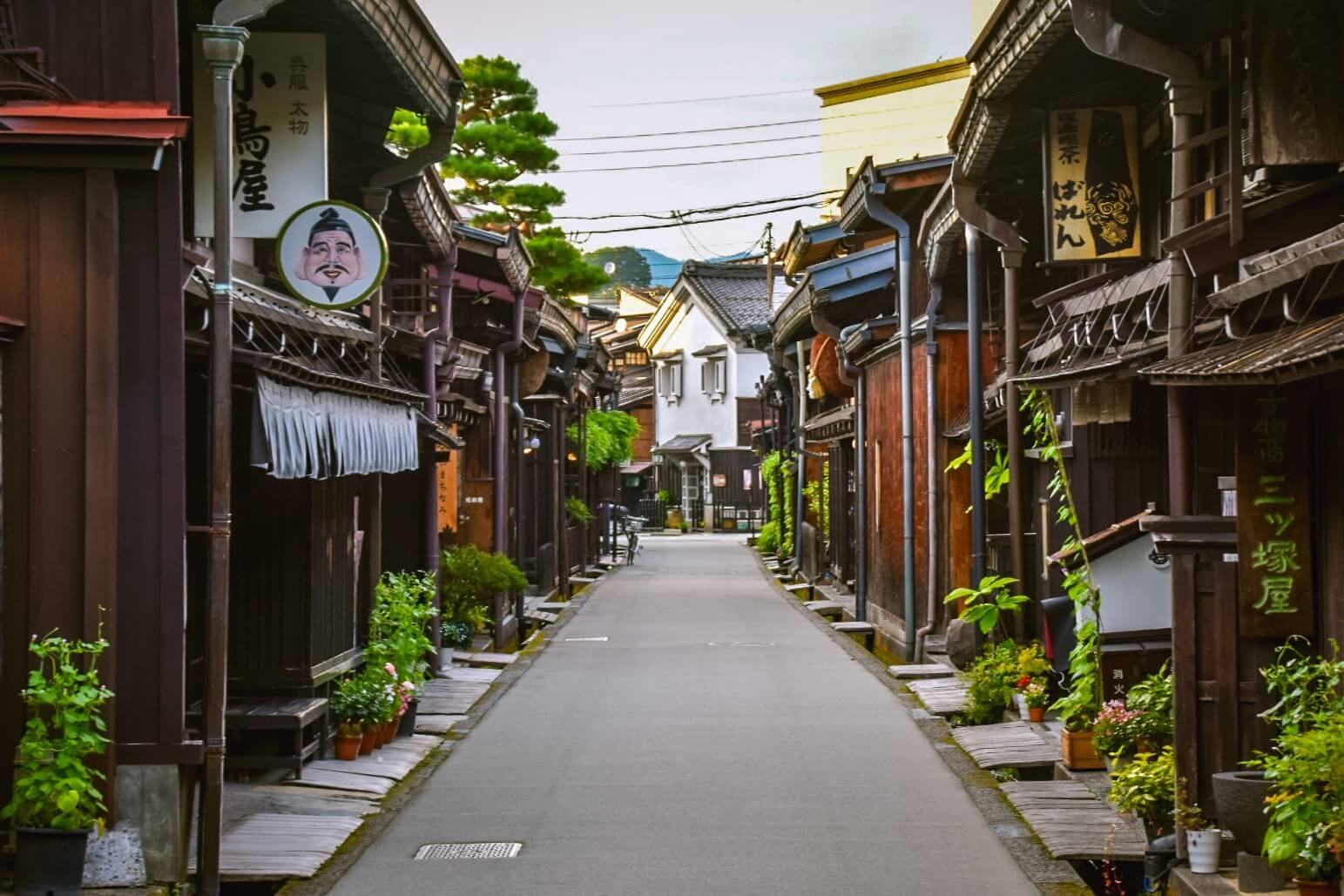
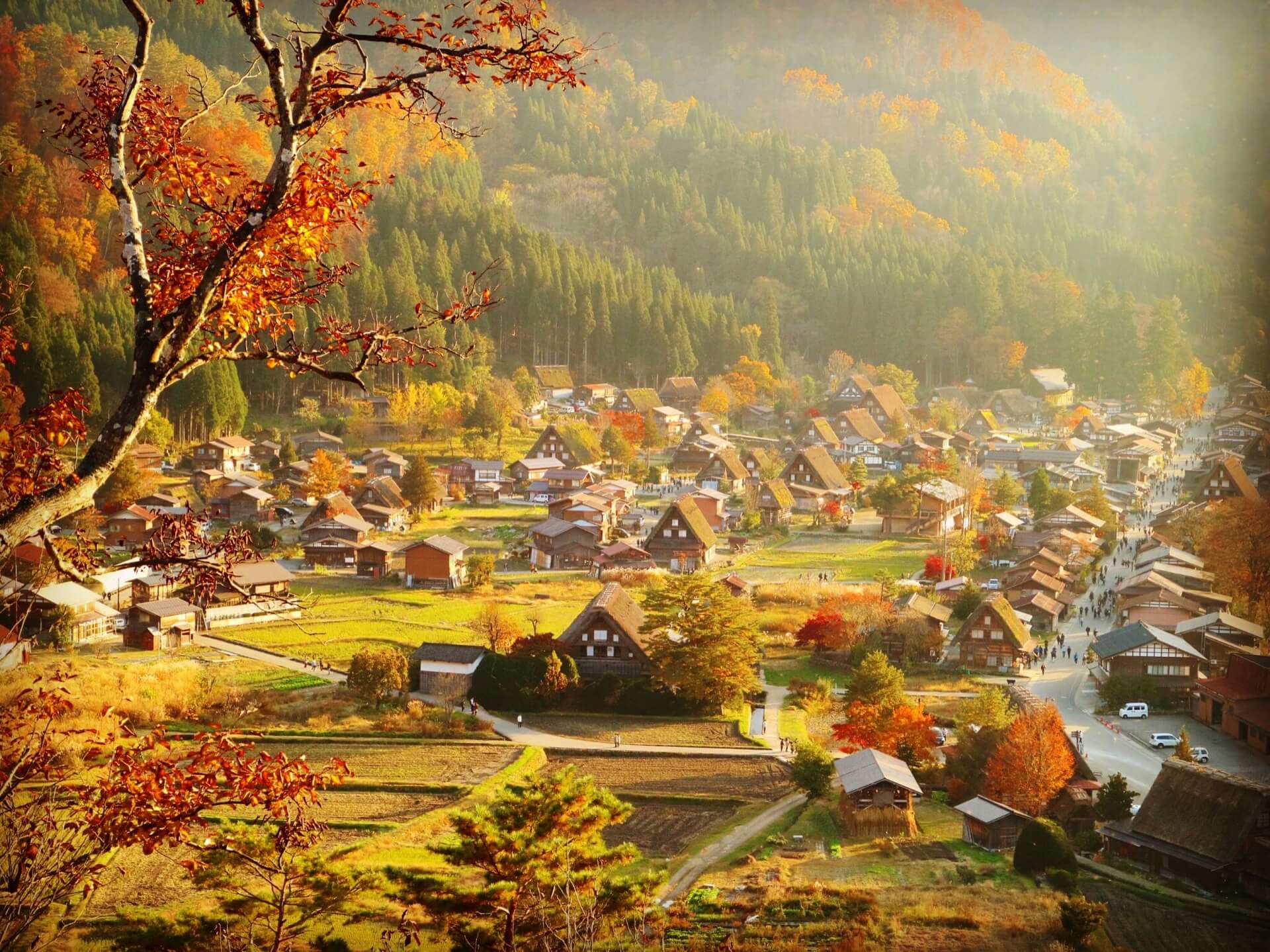
FROM SHIRAKAWA-GO: VISIT TAKAYAMA
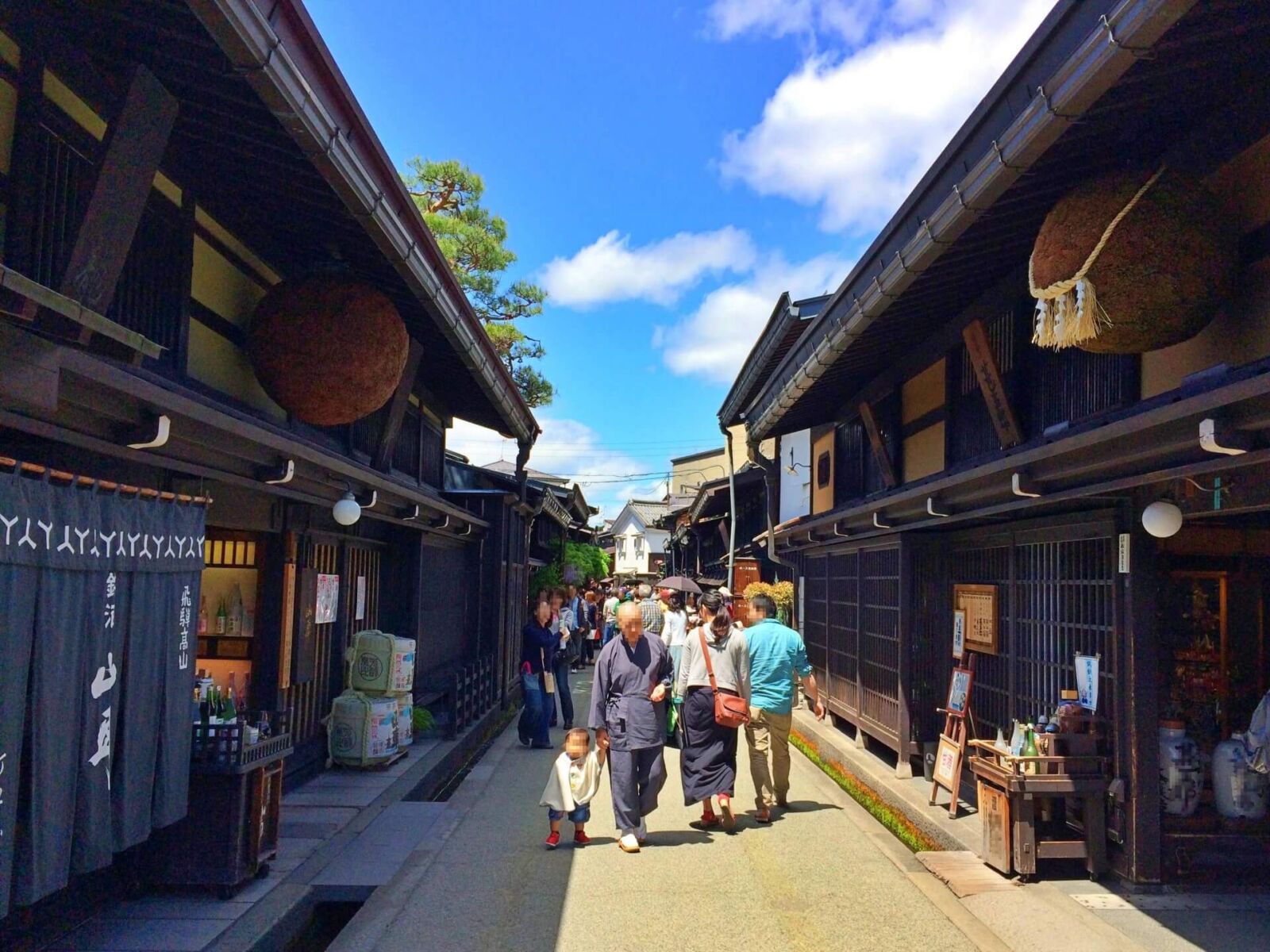
Many visitors to Shirakawa-go will make the journey via its nearby neighbour of Takayama. Long known to Japanese as one of the best-preserved Edo Period towns in the country, Takayama has achieved increasing popularity with international visitors following the World Heritage-listing of Shirakawa-go and Gokayama. As international travellers move to and from Shirakawa-go they have discovered the historic town centre of Takayama and its thriving food culture. As such, visiting both Takayama and Shirakawa-go at the same time is an extremely popular double-stop as visitors move through Central Japan and between Kyoto and Tokyo.
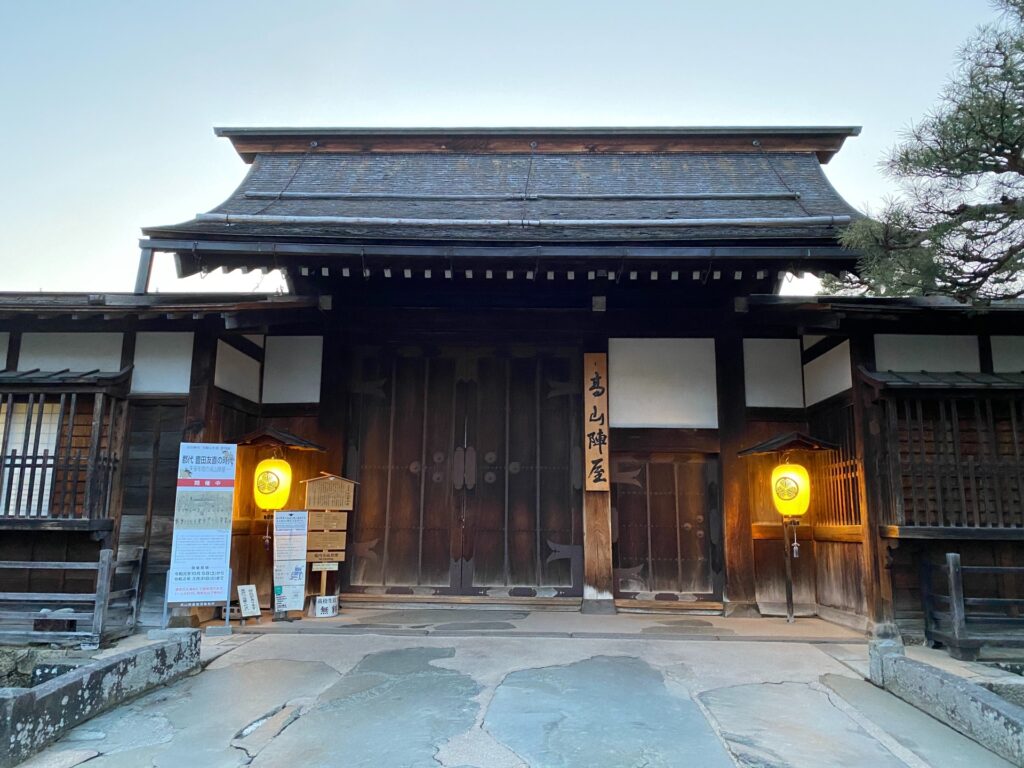
During the Edo Period (1603-1868), Takayama was renowned for the skill of its carpenters, timber craftsmanship and other artisans. As such the city was placed under the direct control of the Tokugawa Shogunate, under a policy known as ‘shihaisho’ or ‘tenryo’. Translating to ‘emperor’s land’, Takayama was effectively owned by the shogun who made use of its master craftsmen in constructing temples and official buildings throughout Japan.
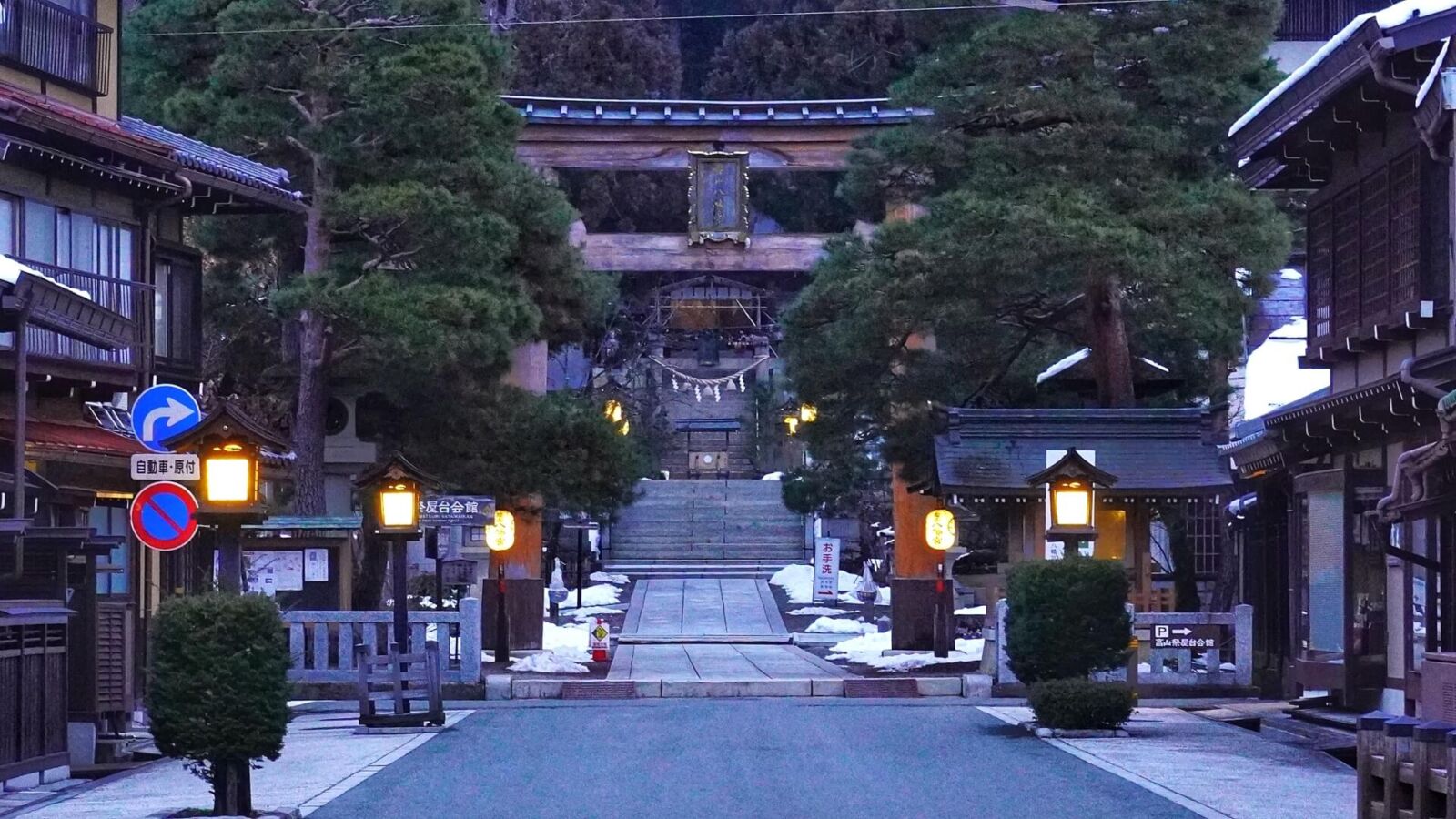
Today, that mastery can still be seen in the charming streetscape of Takayama’s old town. Known as the ‘Sannomachi’, the historic centre of the city lays claim to being one of Japan’s best remaining examples of an Edo Period town. Original buildings dating back to the 18th century remain today, a testament to the quality with which they were constructed. Merchant buildings, storehouses, and historic homes operate as restaurants, cafes, museums, and craft stores, with the families that run them often living on the second-floor.
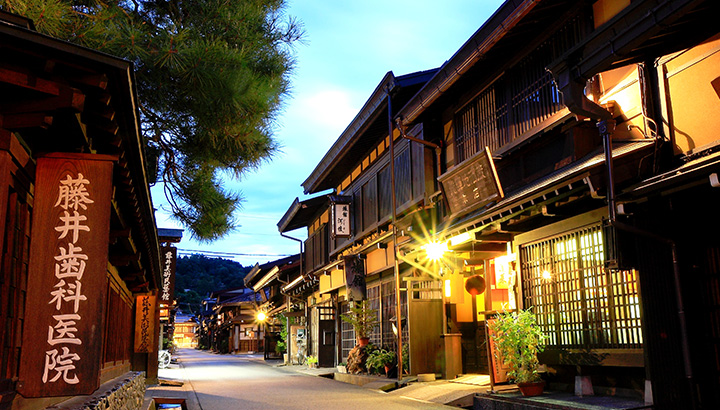
Takayama has also established itself as a great town for foodies and lovers of ‘washoku’ (Japanese cuisine). Located in the next to the Hida region of Gifu Prefecture, called is also called Hida-Takayama and many visitors come to try some of Japan’s best beef. Hida beef or ‘Hida-gyu’ is the name given to a specific type of beef, produced from black-haired Japanese cattle.
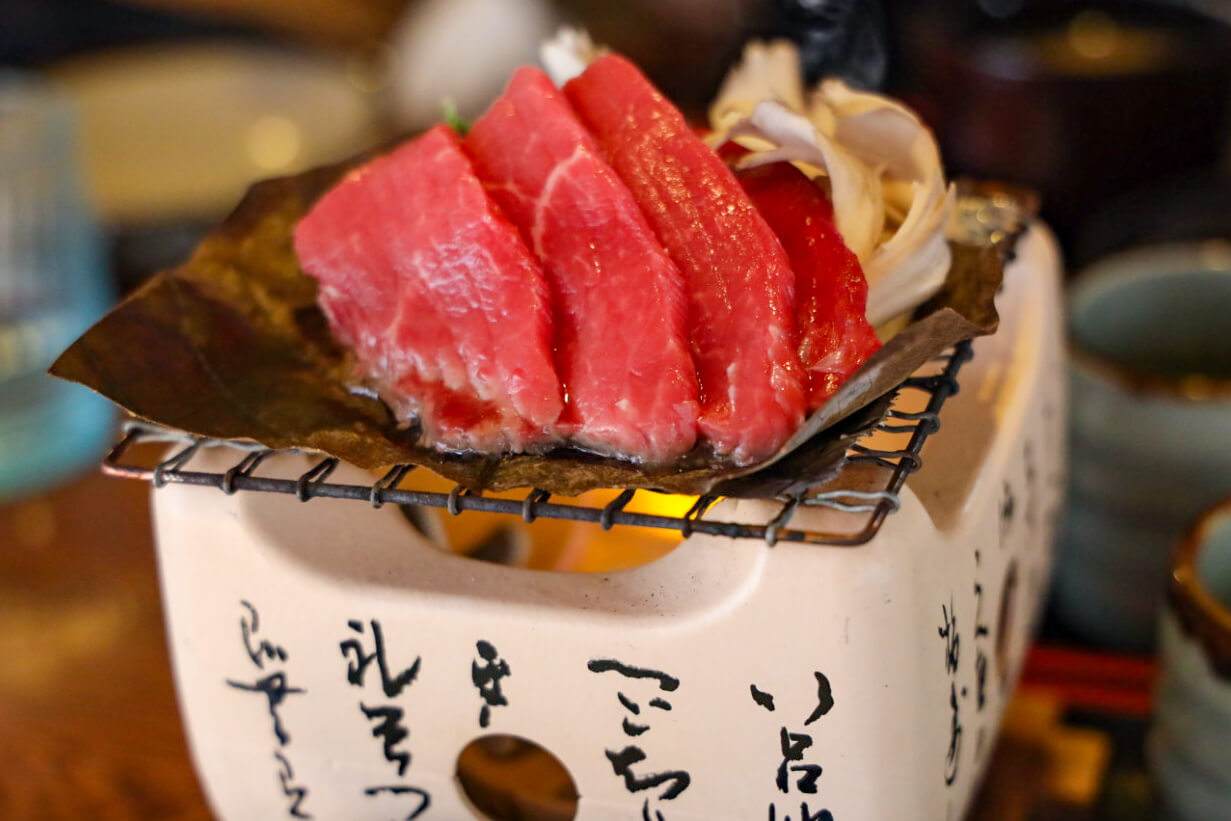
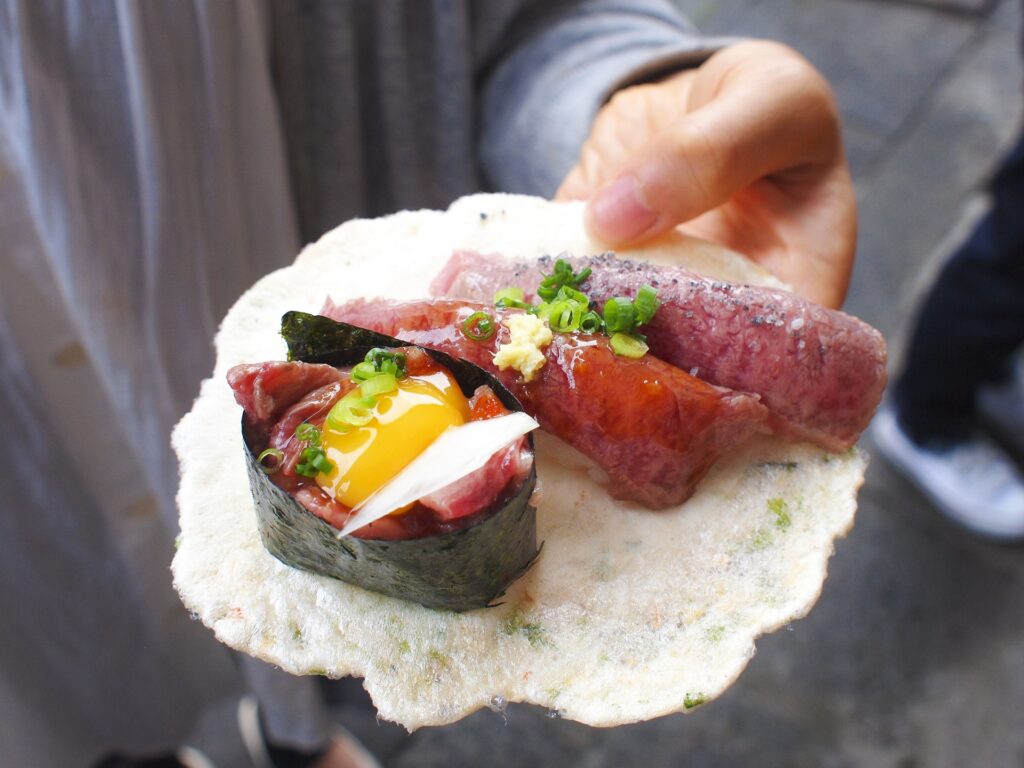
Known for its intense marbling, the flavor is rich and sumptuous to eat. Considered the match of internationally acclaimed ‘wagyu’ and Kobe beef, for many Japanese Hida-gyu is the best beef in Japan. Located under an hour from Shirakawa-go and the main transport hub through which most visitors move, there really is no excuse not to spend a day or two in, and around Takayama.
25 THINGS TO DO AROUND TAKAYAMA & WHERE TO STAY
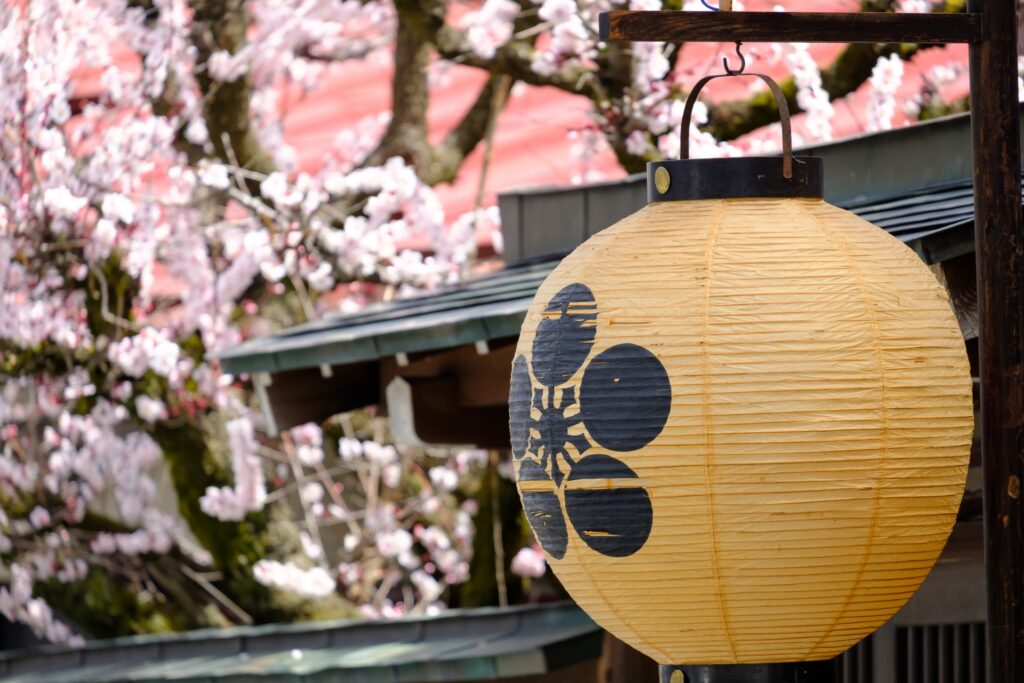
When people talk about the beauty of Takayama and encourage you to visit, they are speaking of the city’s beautiful historic centre – one of Japan’s best remaining examples of an Edo Period (1603-1868) town. Through that time, Takayama was renowned for the skill of its carpenters, timber craftsmanship and other artisans. Today, that mastery can still be seen in the charming streetscape of Takayama’s old town. Known as the Sannomachi, the historic centre of the city is lined with beautiful buildings housing restaurants, craft and food stores, breweries, museums, accommodation and many residential homes. The city is equally well-known for its thriving food scene including its famous Hida beef and Takayama ramen, while outside of the city, visitors can access some of Japan’s most rewarding destinations including the World Heritage-listed villages of Shirakawa-go and Gokayama, the beautiful alpine valley of Kamikochi or more historic destinations such as Matsumoto Castle and post towns of the Nakasendo. For tips and suggestions of what to do while there, including accommodation listings, see our ’25 Things To Do Around Takayama & Where To Stay’ page.
FROM SHIRAKAWA-GO: VISIT KAMIKOCHI & OKUHIDA ONSEN
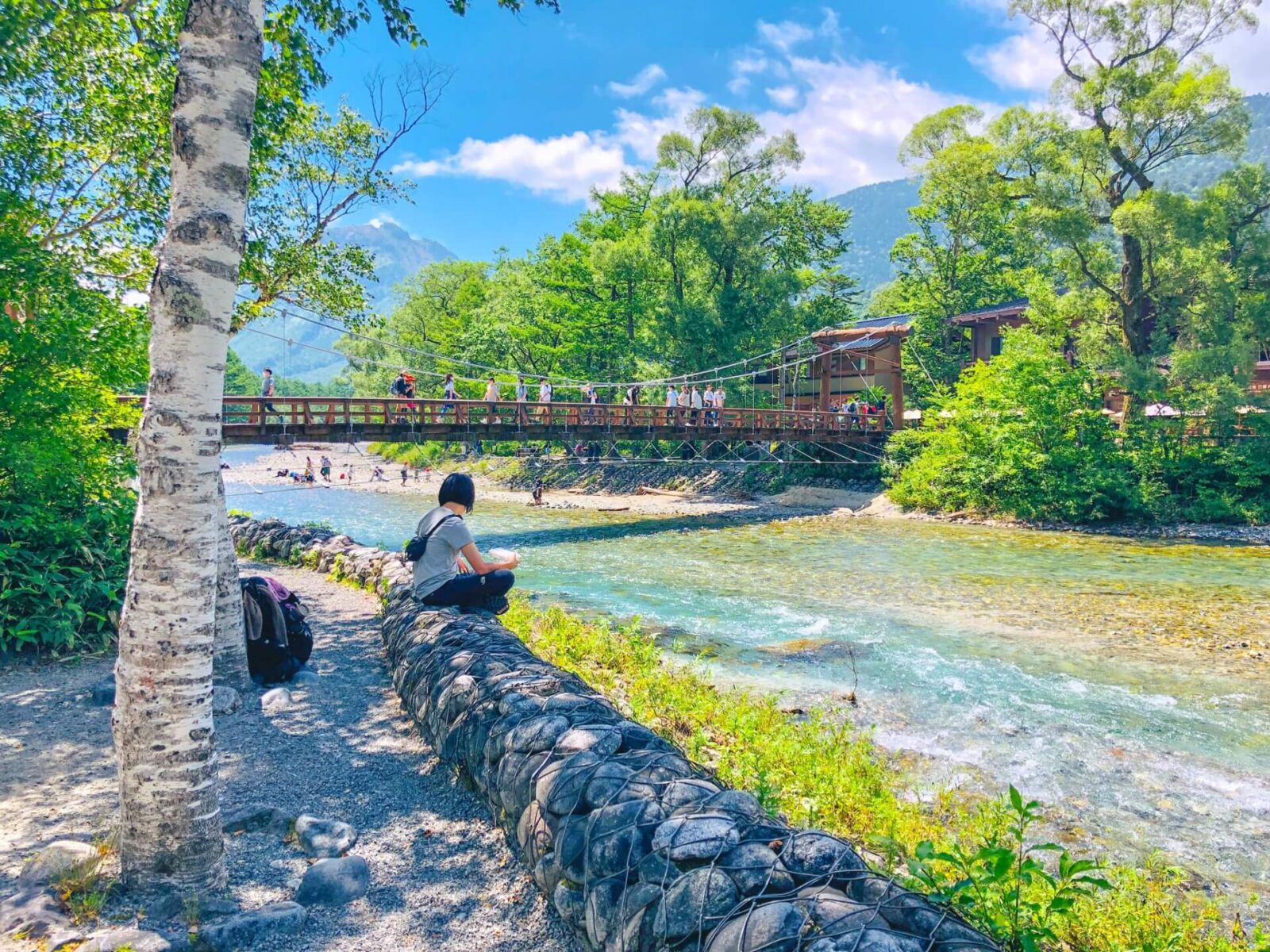
Nestled high in the Hida Mountains, or North Japan Alps, between Takayama and Matsumoto, Kamikochi is considered the jewel of the Chubu Sangaku National Park. Approximately two hours from Shirakawa-go (via Takayama), Kamikochi is another of Central Japan’s most treasured attractions.
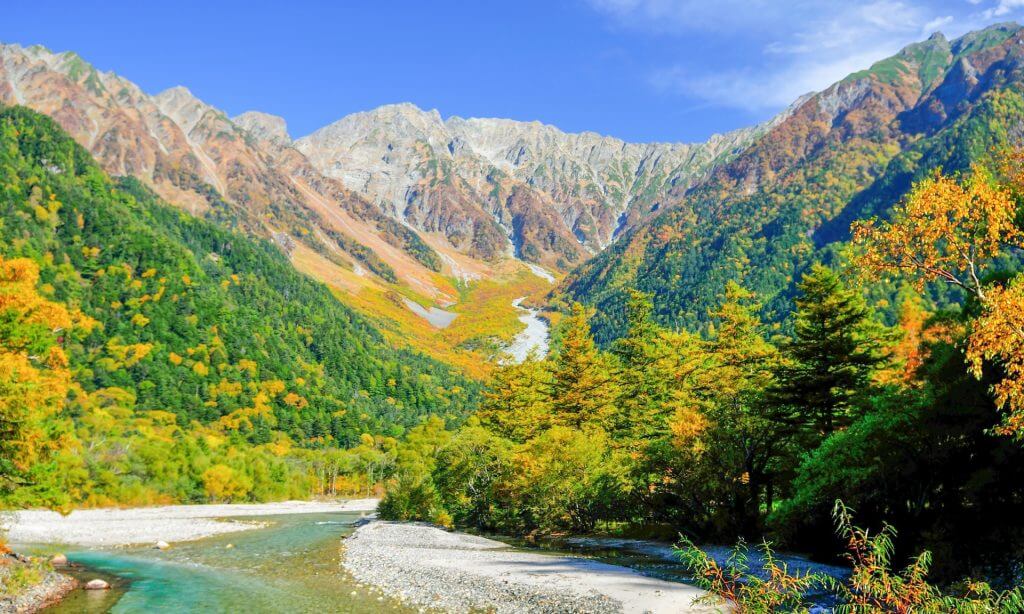
We recommend that you go slow, take your time, and combine your visit to Shirakawa-go with one of Japan’s most spectacular natural landscapes. A true alpine oasis sitting beneath the high peaks of Mt Yari (3180m), Mt Hotaka (3190) and Mt Yakedake (2455m), Kamikochi is a 16 kilometre long valley that follows the Azusa River and is home to diverse range of flora and fauna. Hiking trails span-out along the valley floor and follow the river as it meanders north to south, before more advanced hiking and climbing routes ascend to the mountains above.
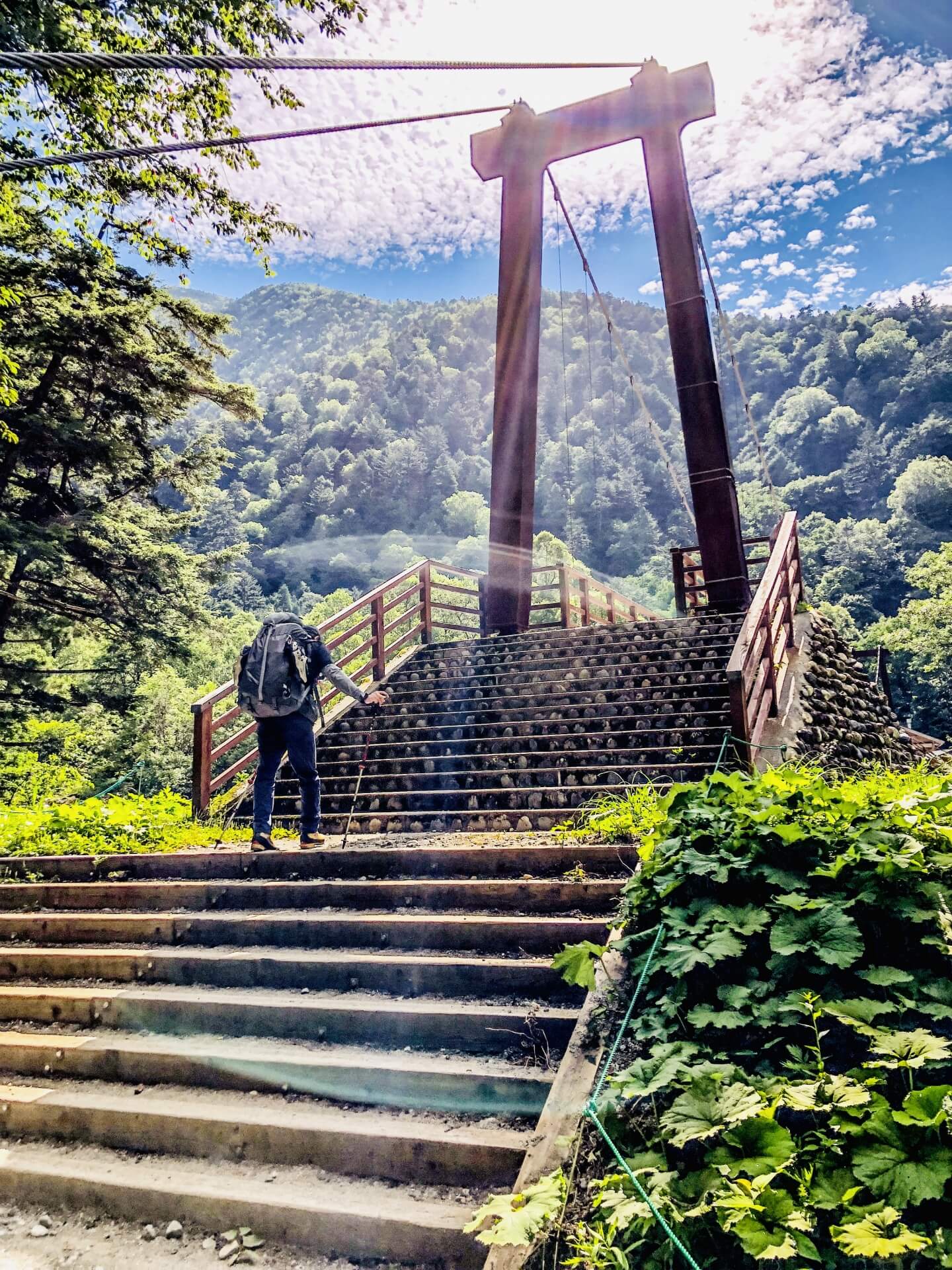
Known as one of Japan’s most spectacular natural landscapes, access to Kamikochi is controlled in order to preserve its pristine character and important ecosystems including wetlands, ponds, and the sparkling Azusa River which flows down from Mt Hotaka to feed the world below.
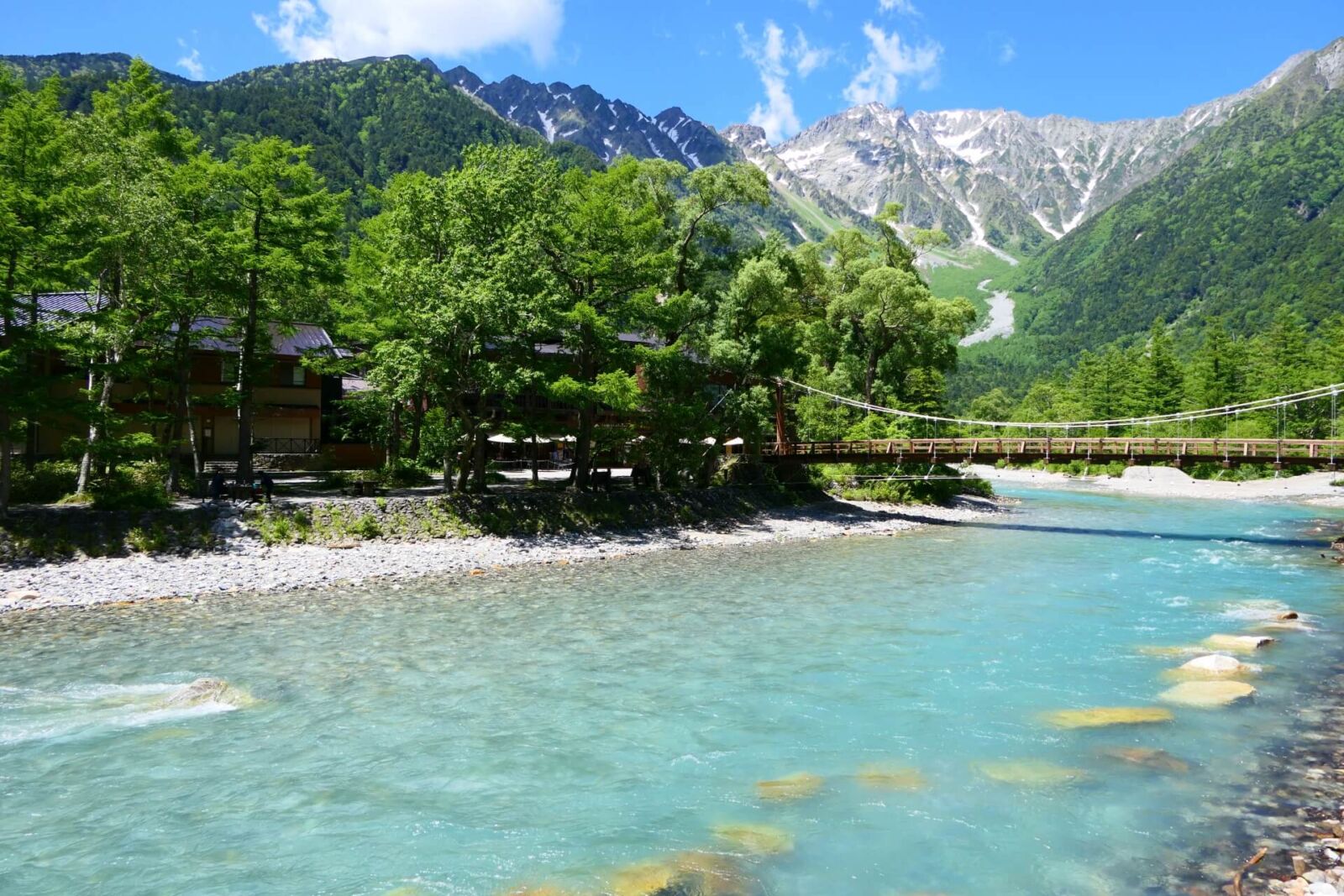
Japanese folklore tells that mountains are the source of human souls; born atop the mountain and flowing down rivers to bring life and prosperity of the human world below. As the domain of the gods, mountains have long been revered and also feared in Japan – places where only ascetics or the most hardened, wild people would venture. As such, Kamikochi’s spiritual importance equals its ecological significance – for Japanese it has long been considered a domain of the gods and should not be missed when visiting the villages of Shirakawa-go and Gokayama.
Interested in exploring Kamikochi’s natural splendor?
Elevate your journey from the charming town of Takayama to the majestic Japanese Alps with our ‘1-Day Tour from Takayama: Cultural Heritage and Kamikochi’s Alpine Beauty.’ Experience the historic allure of Hida Folk Village and the serene landscapes of Kamikochi. This tour offers a seamless blend of cultural exploration and natural beauty, perfect for those seeking to immerse themselves in the diverse wonders of Takayama and the Japanese Alps.
1 Day Tour
| 1-Day Tour from Takayama: Cultural Heritage and Kamikochi’s Alpine Beauty | |
| Period | April – November |
| Time | 09:30 – 18:00 |
| Meeting Place | Takayama Station |
| Adult Rate | ¥25,800 |
| Child Rate | ¥14,900 |

Also, Consider our ‘1-Day Tour from Nagano and Matsumoto: Kamikochi & Matsumoto Castle’ as a captivating option. Though not starting from Takayama or Shirakawa-go, this tour offers an immersive experience in Kamikochi’s breathtaking landscapes and the historic beauty of Matsumoto Castle. It’s a perfect choice for nature enthusiasts and history buffs alike, looking to explore beyond Takayama’s borders. Embark on this journey to witness the serene beauty of the Japanese Alps and the rich heritage of Matsumoto.
1 Day Tour
| 1-Day Tour from Nagano and Matsumoto: Kamikochi & Matsumoto Castle | |
|
| |
| Period | April to November |
| Time | 08:15 – 18:30 |
| Meeting Place | Nagano Station Matsumoto Station |
| Adult Rate | ¥23,800 |
| Child Rate | ¥11,900 |

OKUHIDA ONSEN AREA
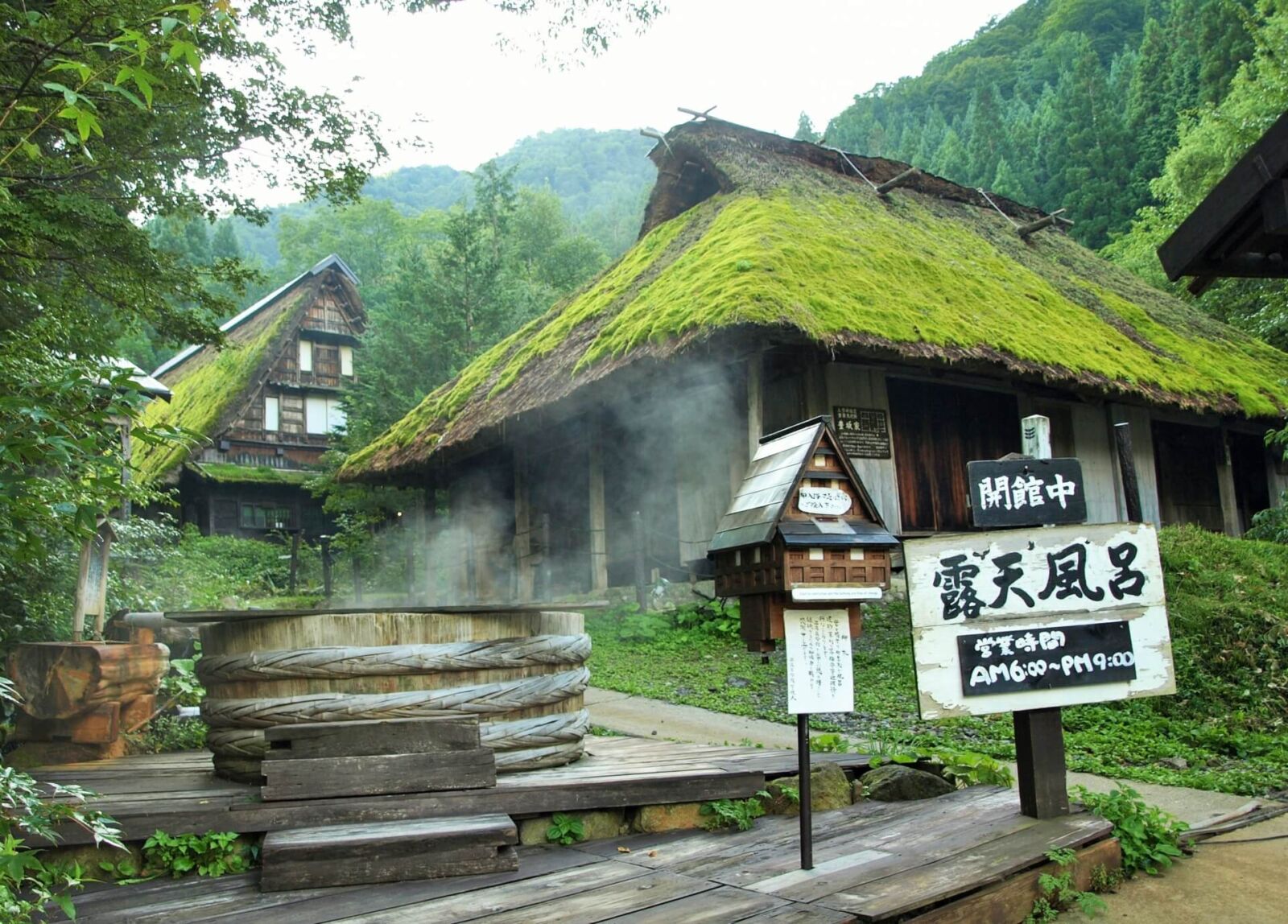
When traveling to Kamikochi from Shirakawa-go and via Takayama, visitors will pass through Okuhida Onsen – one of the region’s best hot springs localities. Known for its pristine natural setting and many outstanding ‘ryokan’ (traditional guesthouses), most hotels have their own ‘onsen’ (natural hot springs) for the exclusive use of their guests. Also offering traditional service including ‘kaiseki’ (traditional multi-course) dinner, going slow and staying overnight in Okuhida Onsen offers the chance to relax and breathe in the atmosphere of Japan’s mountainous heartland.
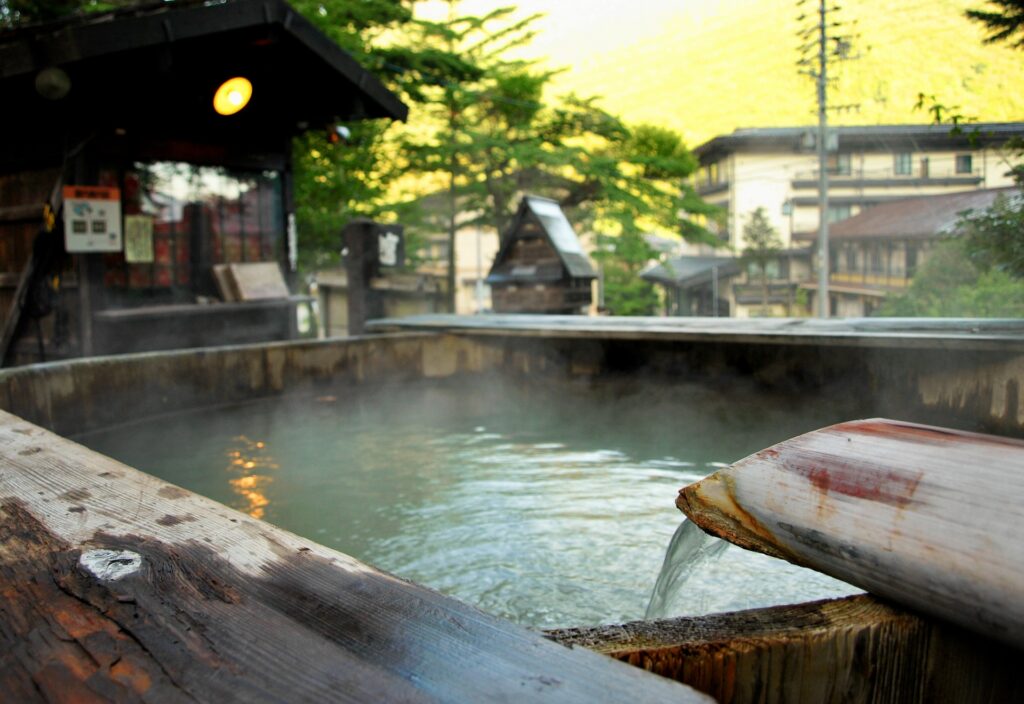
Okuhida is comprised of five onsen towns, with Hirayu Onsen located only 20 minutes drive from Kamikochi – a great option either side of visiting the beautiful alpine valley – and just one of Nagano’s many historic onsen towns.
Planning to stay in the Okuhida Onsen area?
Our ‘1-Day Tour from Takayama: Hida’s Hidden Gems – Limestone Caves and the Shinhotaka Ropeway’ is the perfect addition to your itinerary. Explore the mysterious caves, encounter the majestic bears of Hida, and experience the awe-inspiring views from the Shinhotaka Ropeway. For your convenience, we offer drop-offs at accommodations in the Okuhida Onsen Area. This tour blends adventure with relaxation, making your stay in Okuhida both exciting and comfortable. Book now for an unforgettable day of exploration and natural beauty.
1 Day Tour
| 1-Day Tour from Takayama: Hida’s Hidden Gems – Limestone Caves and the Shinhotaka Ropeway | |
|
| |
| Period | All Year Round |
| Time | 09:00 – 17:30 |
| Meeting Place | Takayama Station |
| Adult Rate | ¥28,800 |
| Child Rate | ¥23,000 |

15 THINGS TO DO IN KAMIKOCHI & WHERE TO STAY
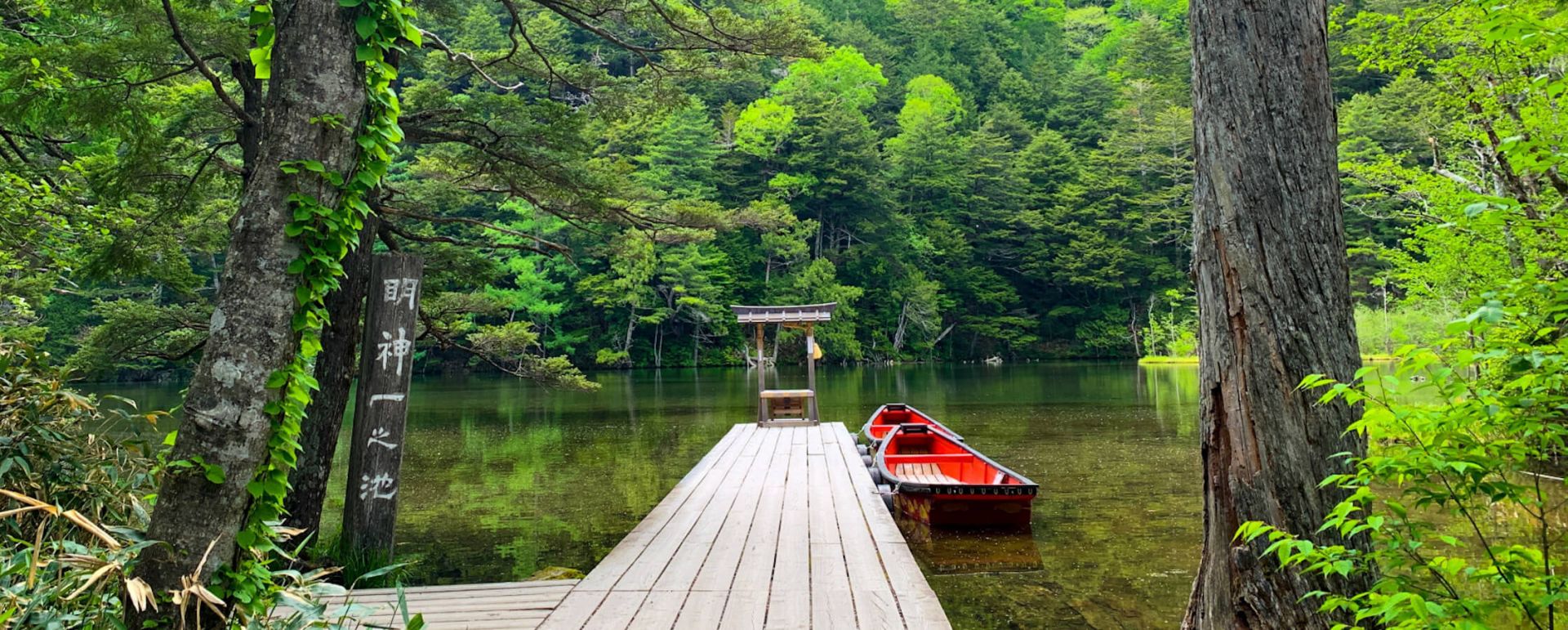
Kamikochi is one of Japan’s most captivating outdoor destinations. Following the Azusa River, the alpine valley has leisurely walking trails leading to iconic views of natural features including Taisho-ike, Myojin-ike and multiple mountains including Mount Yakedake, Mount Yari and most famously, the triple-peaked Mount Hotaka. Our ’15 Things To Do In Kamikochi & Where To Stay’ page has lots of great tips and suggestions of things to do and see, including accommodation listings, in and around Kamikochi.



